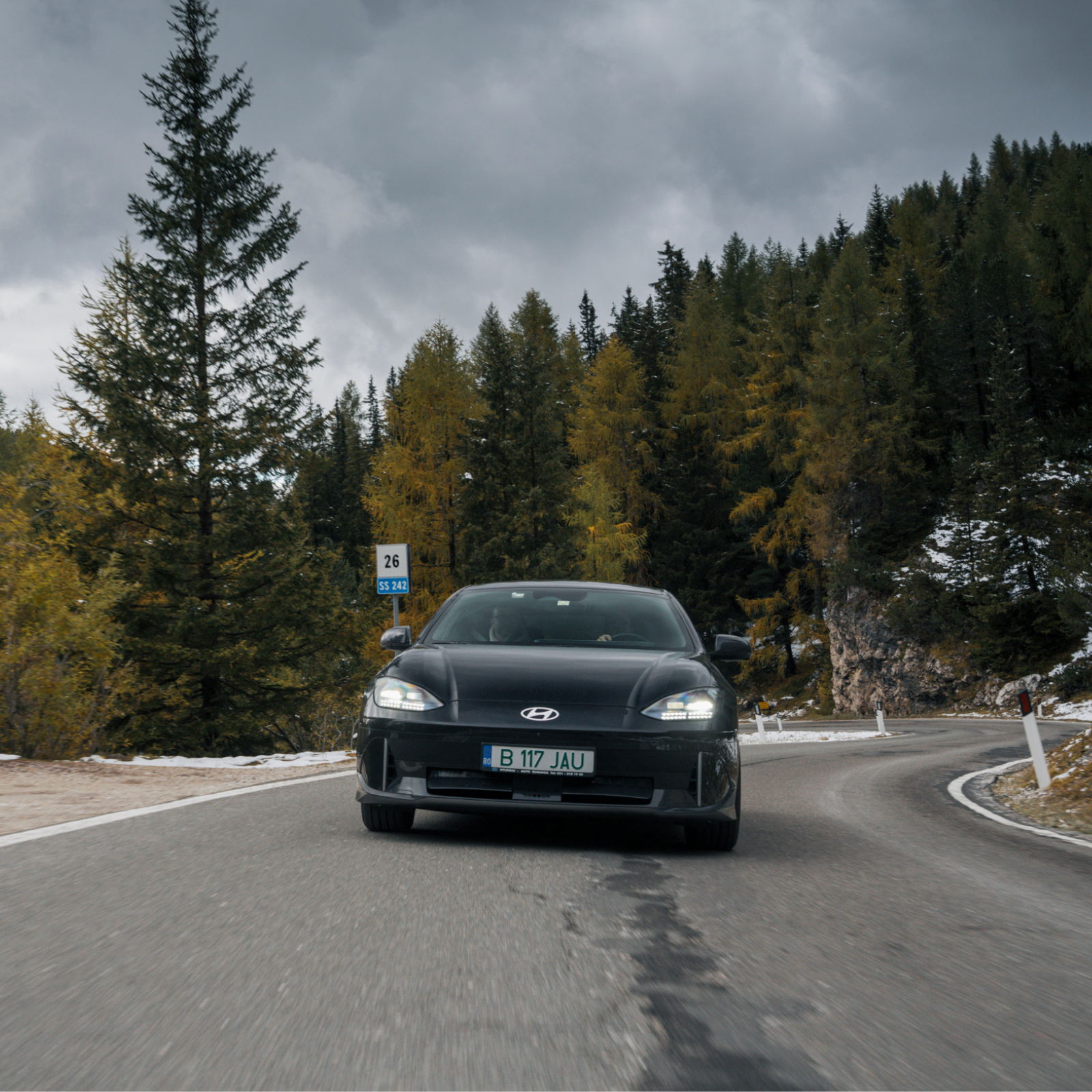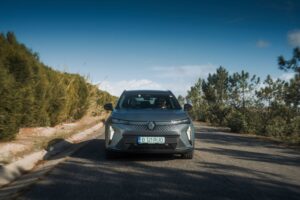The Hyundai Ioniq 6 is currently the top of the South Korean-built electric range. The Asian brand’s model brings a cocktail of silhouettes to the public – aesthetically – while underneath the eyebrow-raising looks is an 800V technical platform capable of delivering charging powers of up to 240 kW. In the usual words: fast charging.
The Hyundai Ioniq 6, in the version with an electric motor and a large 77.4 kWh battery, was tested for 16 days over a distance of almost 9,000 kilometers, from Bucharest to Lisbon and back. Below you can find full details about the actual range, actual consumption, charging costs and how much time we spent at the stations.

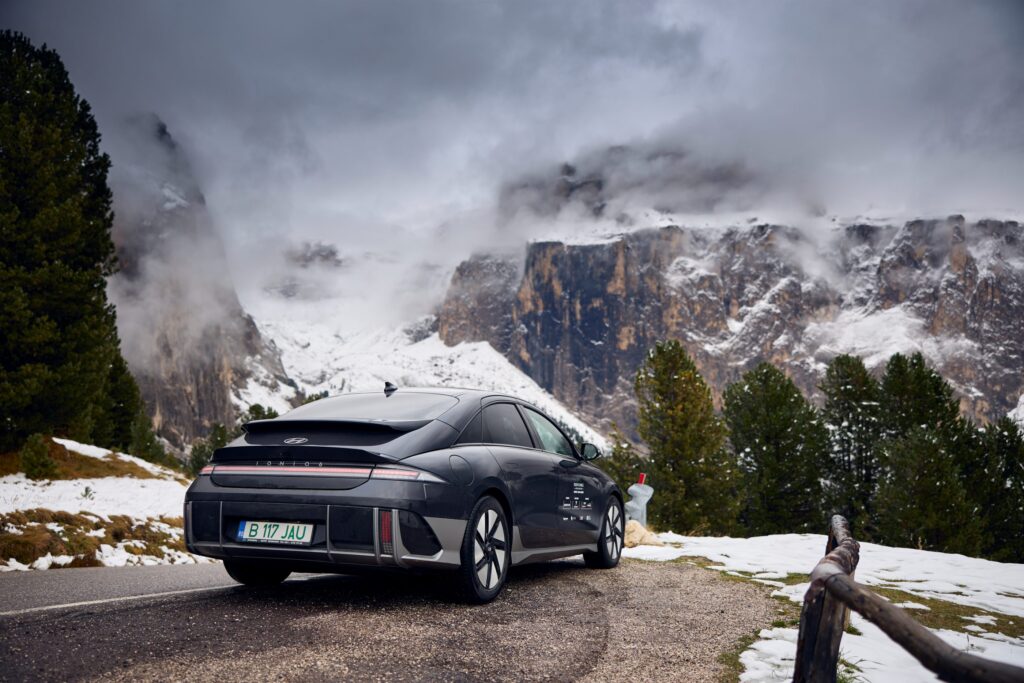
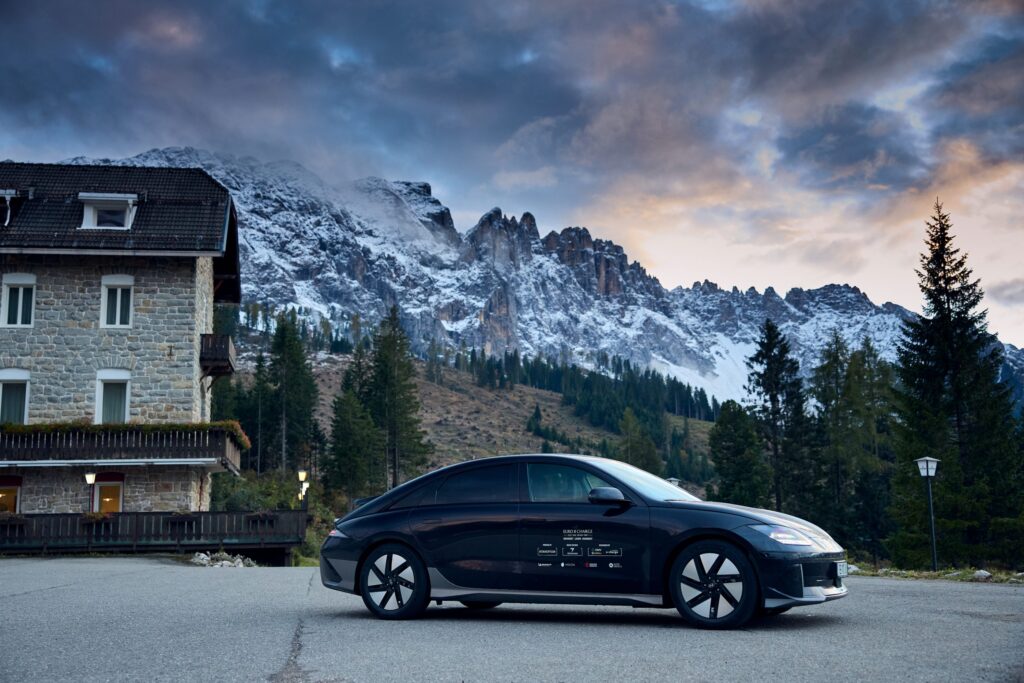
Hyundai Ioniq 6: energy consumption, actual range, charging costs
The average cost per kWh is between €0.39 – €1 and the average cost per kilometer is between €0.08 – €0.15. The costs are given as a range as they vary depending on the application used/subscription of each user.


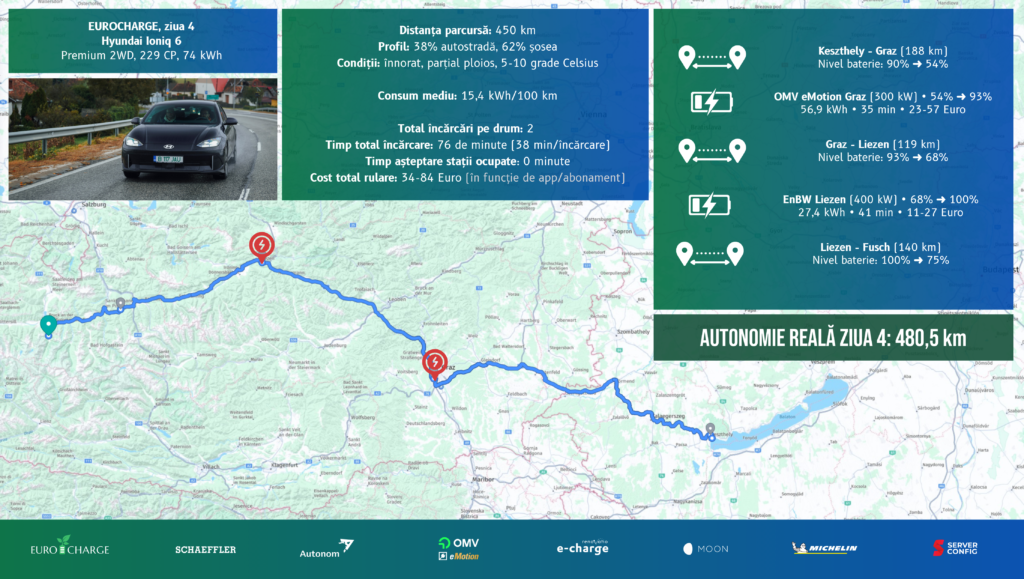
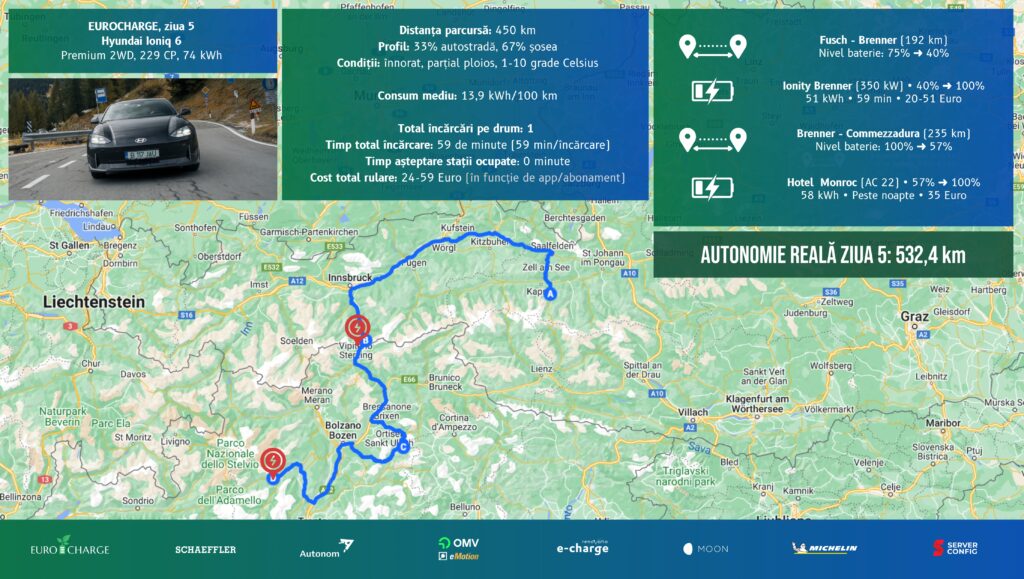
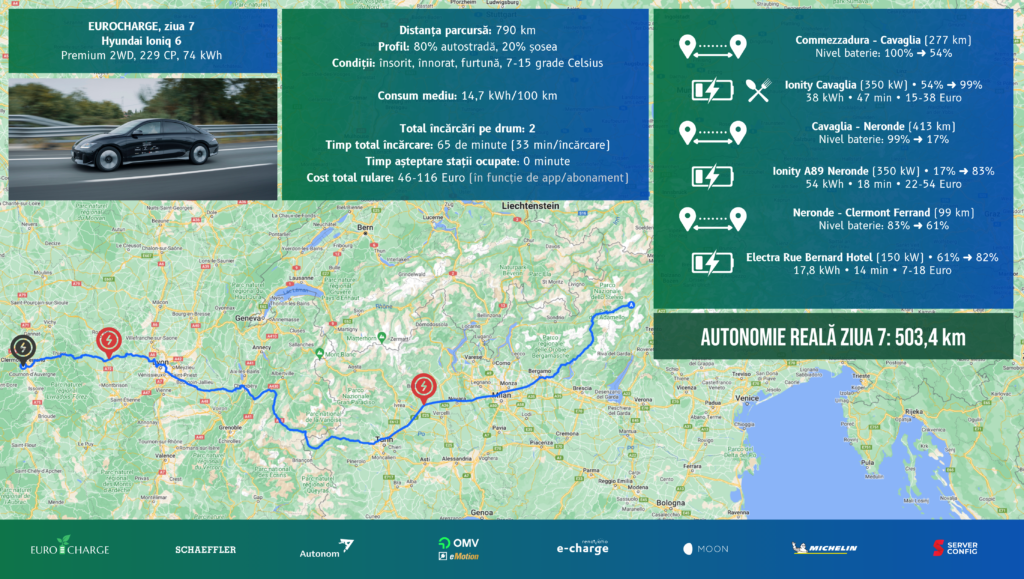
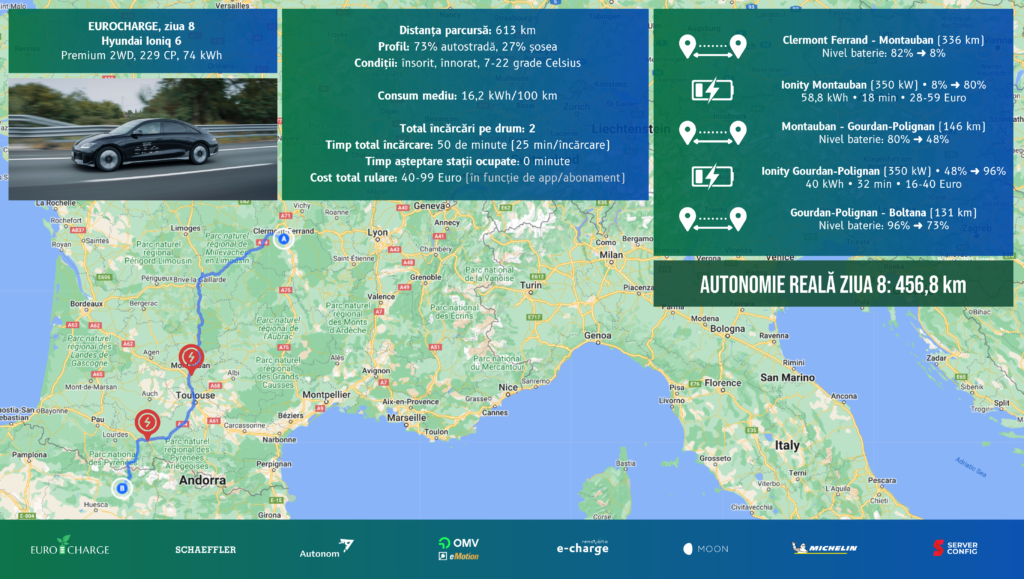
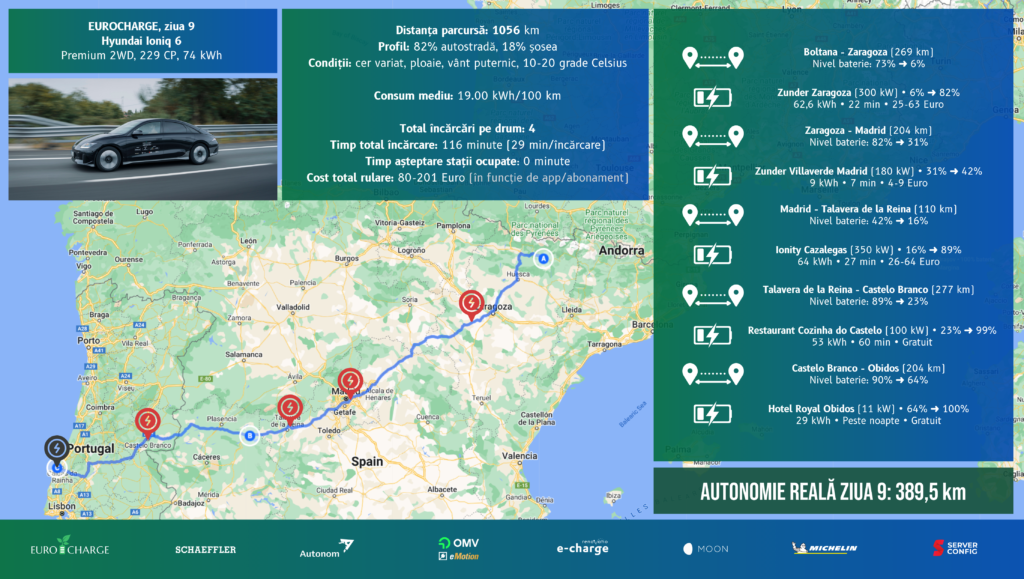

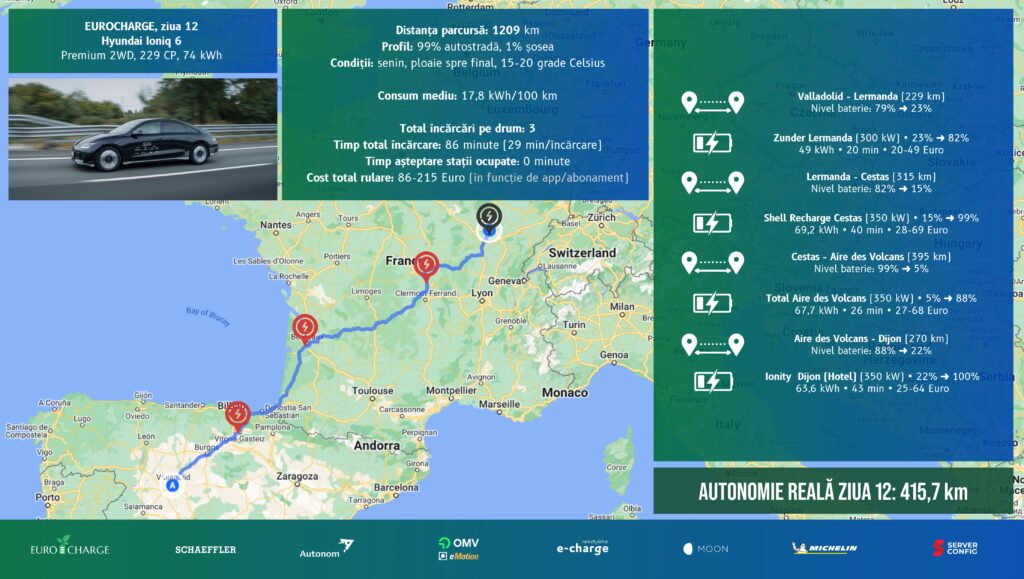
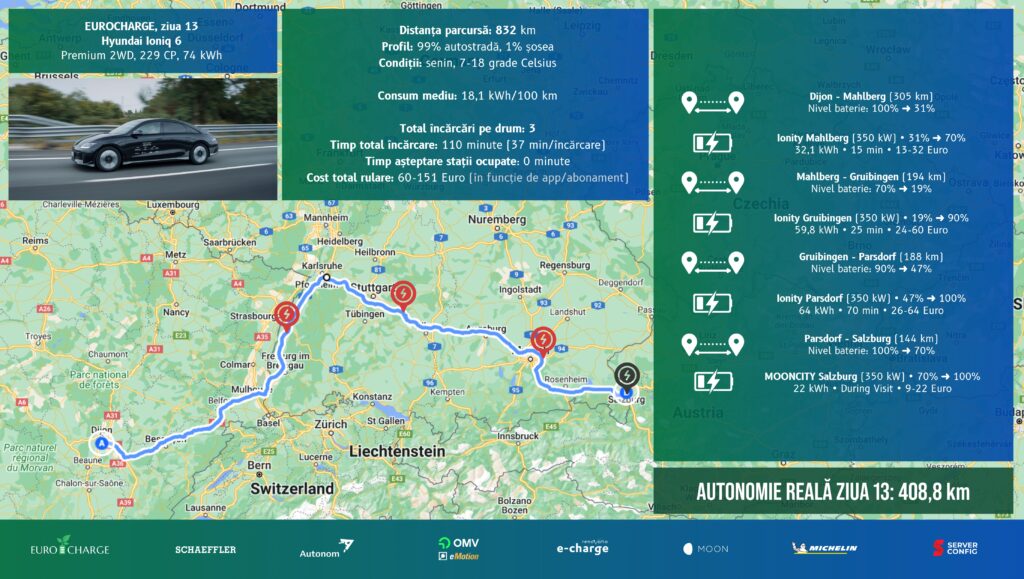

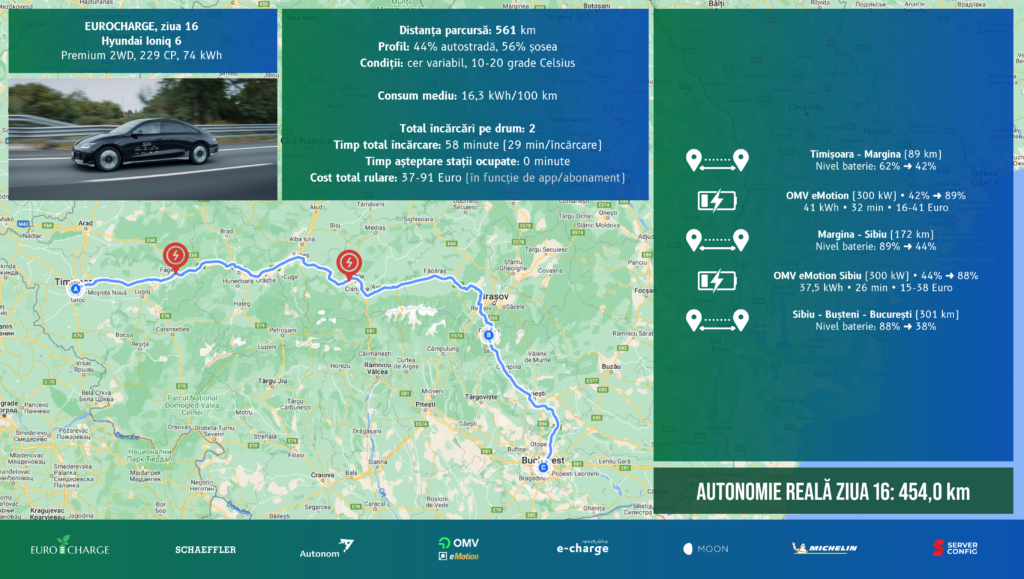
Impressions of those who drove the Hyundai Ioniq 6 in EUROCHARGE by Schaeffler
Tibi Buzdugan (Electromobility)
After the resounding success of the Ioniq 5, with a design completely unlike anything the Korean brand had ever created before, Hyundai tried to appeal to sedan and coupe enthusiasts. The result is the Ioniq 6, a car with a silhouette that from some angles is reminiscent of the Stout Scarab (a kind of aerodynamic minivan from the 1930s) and from others of the Porsche 911, especially thanks to the curved roofline and high spoiler – though the similarities stop there.
Personally, I’m not a fan of this design. I prefer more the angular, retro-futuristic lines of its taller brother, the Ioniq 5. However, as an electric car, built from scratch on this platform, I thought the Ioniq 6 was very successful.
The model I drove has a 77 kWh battery and a single 229 hp motor on the rear axle. Unlike other front-wheel-drive electric cars, the power transmission is much more efficient and it was almost impossible to break grip in dry road conditions and efficiency-oriented tires (Michelin ePrimacy). I find rear-wheel drive sufficient for 99% of uses; perhaps only in snow would I miss all-wheel drive.
The elongated shape seems to cut down a bit on trunk space, but with the engine only in the back, the frunk is very generous and spares you accessories like a pan kit, AC cord, granny charger or first aid kit. Being on the same E-GMP platform as the Ioniq 5, interior space is excellent, and the 800V architecture allows for fast charging – perhaps faster than a bathroom break. Together with a comfort-oriented suspension, all this makes for a very pleasant and smooth driving experience, ideal for a true cruiser.
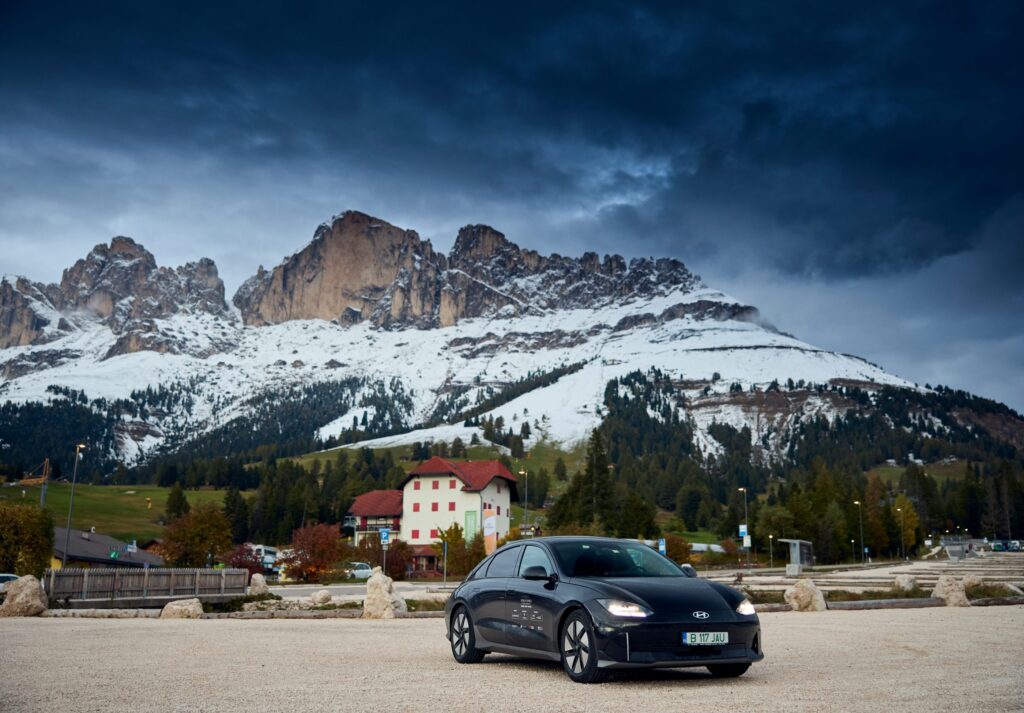
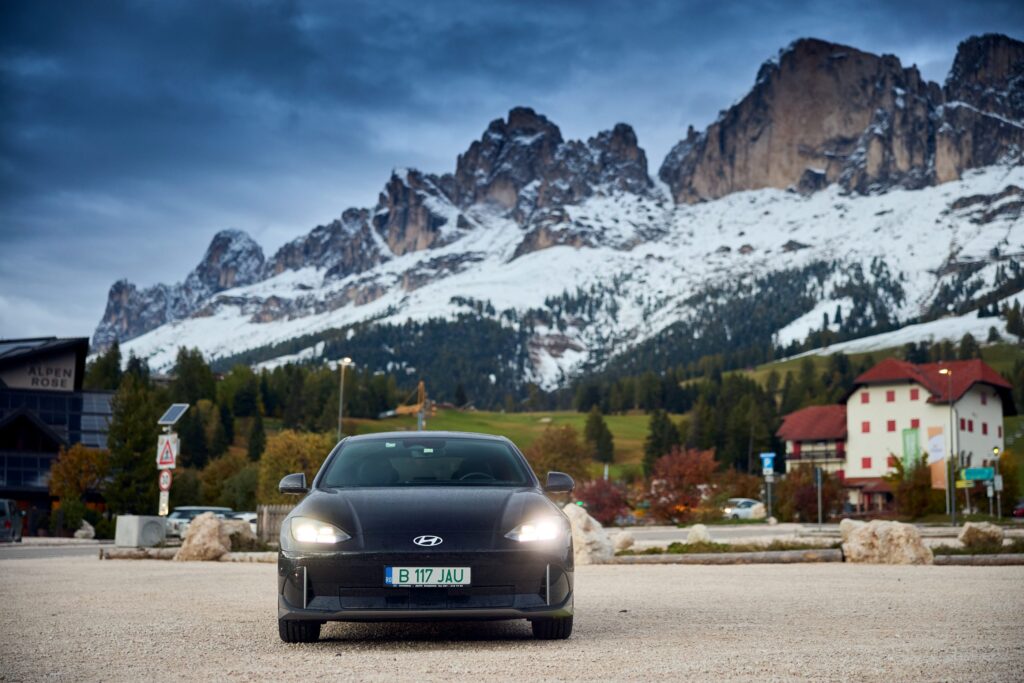
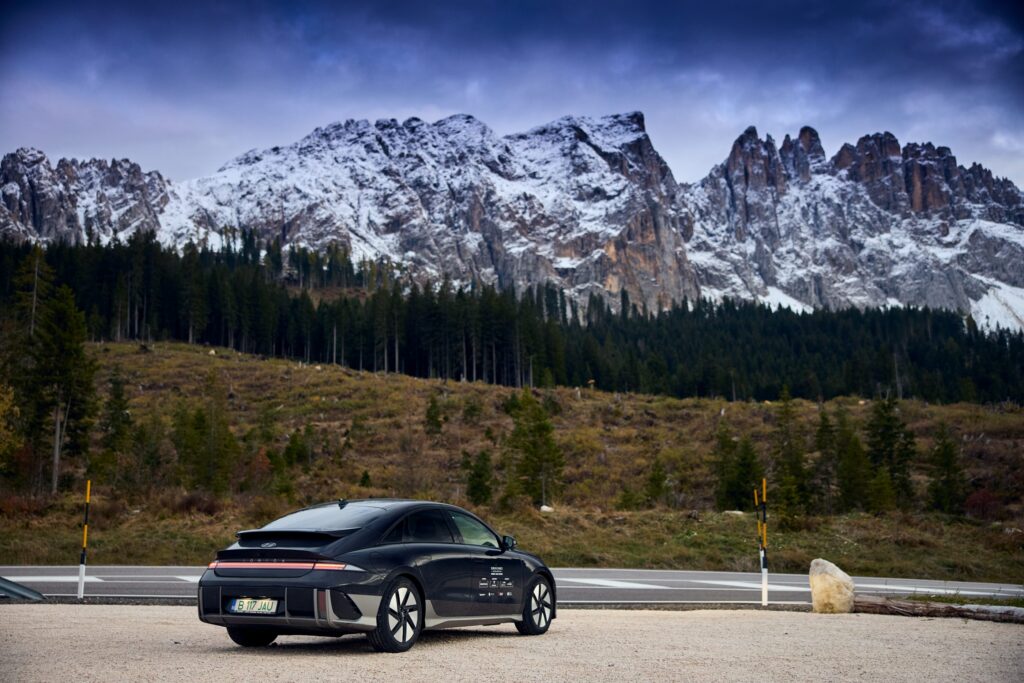
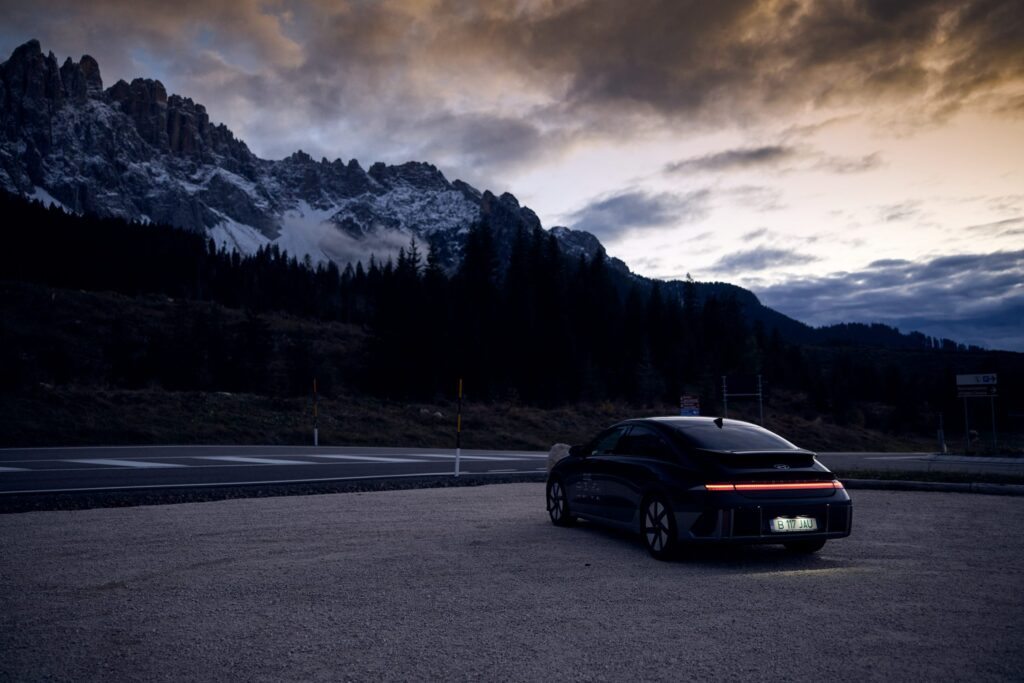
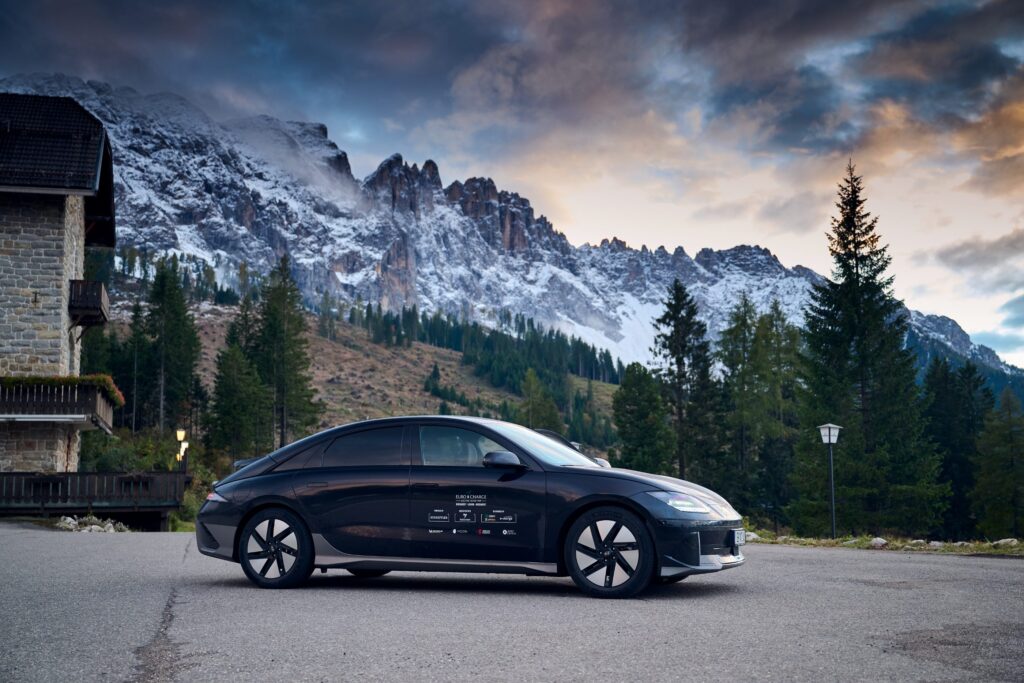

Radu Tudoroiu (Digital storyteller)
The Hyundai Ioniq 6 is, without a doubt, the kind of car that doesn’t leave you indifferent. In anno Domini 2024, when many electrics have similar equipment, quality finishes and a reasonable range the impression is that an important differentiator remains personality. And the 6-le doesn’t lack personality at all.
Sharing a lot with its little brother, it’s the kind of car that you either like from the first second, as I did, or you laugh at it and say it would look exactly like an Apple wireless mouse if it were white. Some might argue that it has a Fiat Multipla vibe, love at first sight, or, well, the other way around.
With a ridiculously generous interior and absolutely respectable luggage space, plus a maximum range of 614 km thanks to the 800V architecture, there’s every chance that the Ioniq 6 ticks all the boxes for a family sedan that’s relatively affordable at the price but with similar performance and equipment to its notably more expensive competitors.
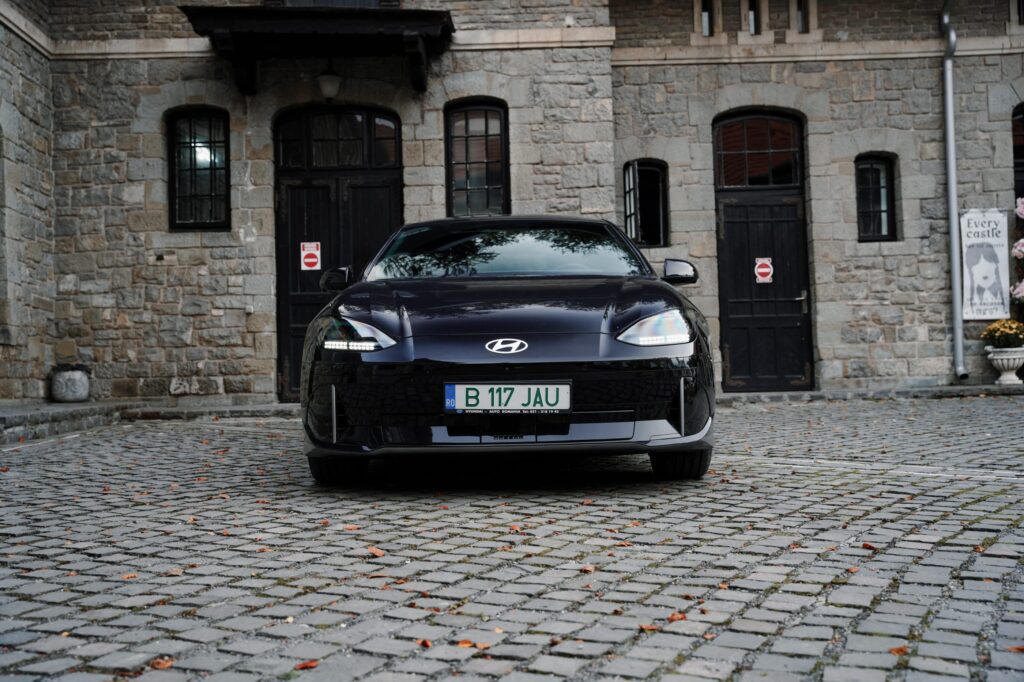
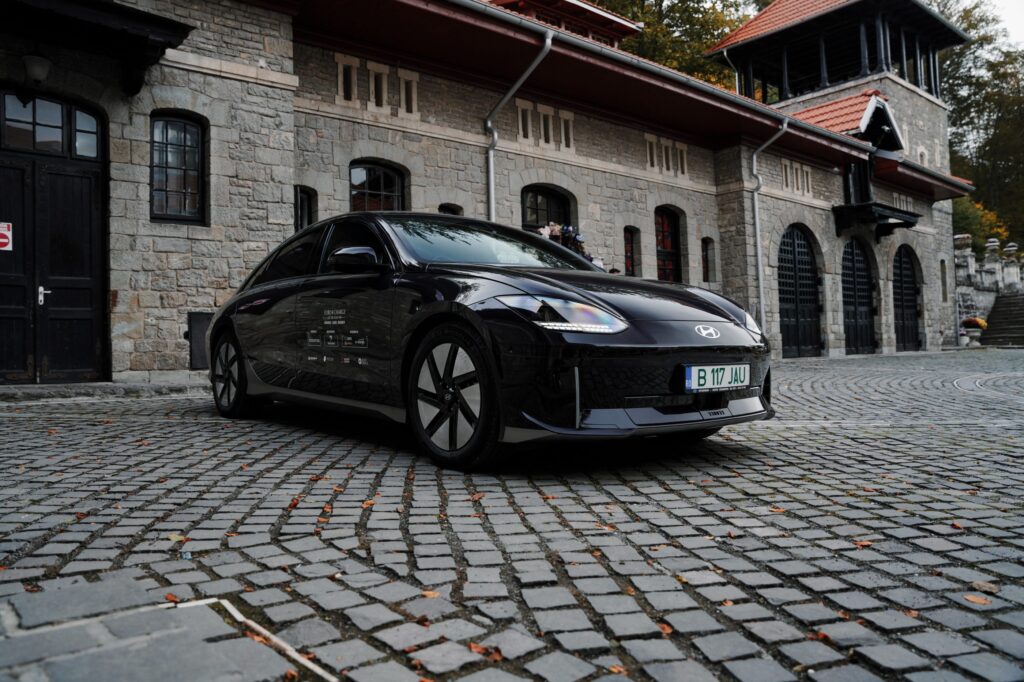
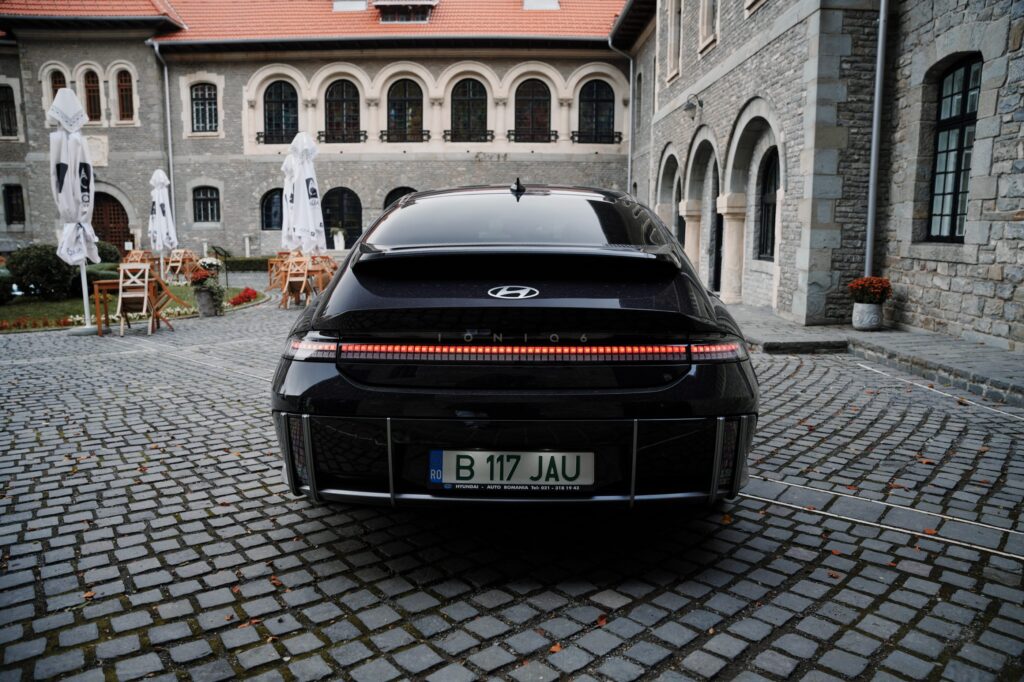
Andrei Barbu (MotorVlog TV)
The interesting part, with revealing effects in EUROCHARGE, is that you can have the opportunity to drive models in the same price range, with the same powertrain and concept, but with completely opposite shapes. That’s how it was for me: I stepped out of the Ford Explorer into the Hyundai Ioniq 6. Both have a single electric motor, both have rear-wheel drive, both have batteries around 75 kWh and both cost around €45,000, depending on trim.
And if you look at the “comparison” strictly as one between two electric cars for which driving efficiency is the most important, the winner is clear. And if it’s not clear, I’ll score: Ioniq 6. The 800-volt architecture is great for long journeys, the interior space is fabulous, and the exterior design is marvelous for such a car: a sort of retro-futuristic, retro-futuristic sedan-coupe that at least manages to catch the eye.
Otherwise, the Ioniq 6 doesn’t wow you with interior materials on base trim, the old-fashioned USB for Apple CarPlay connectivity is hard to find among the plethora of USB-Cs, and the dynamic performance isn’t in tune with Elon’s Elon-targets either. But overall, the Ioniq 6 is, without much argument, one of the best electric cars on the market. Because it gives you the most important argument. Which is the safety of going long and fast, knowing that in just a few minutes you’ll be pulling 230 kW from a station and on your way.
And that’s more important than vegan leather and soft plastic. Especially when it comes to comfort and driving experience, the Ioniq 6 not only doesn’t disappoint, but surprises in the most pleasant way possible.
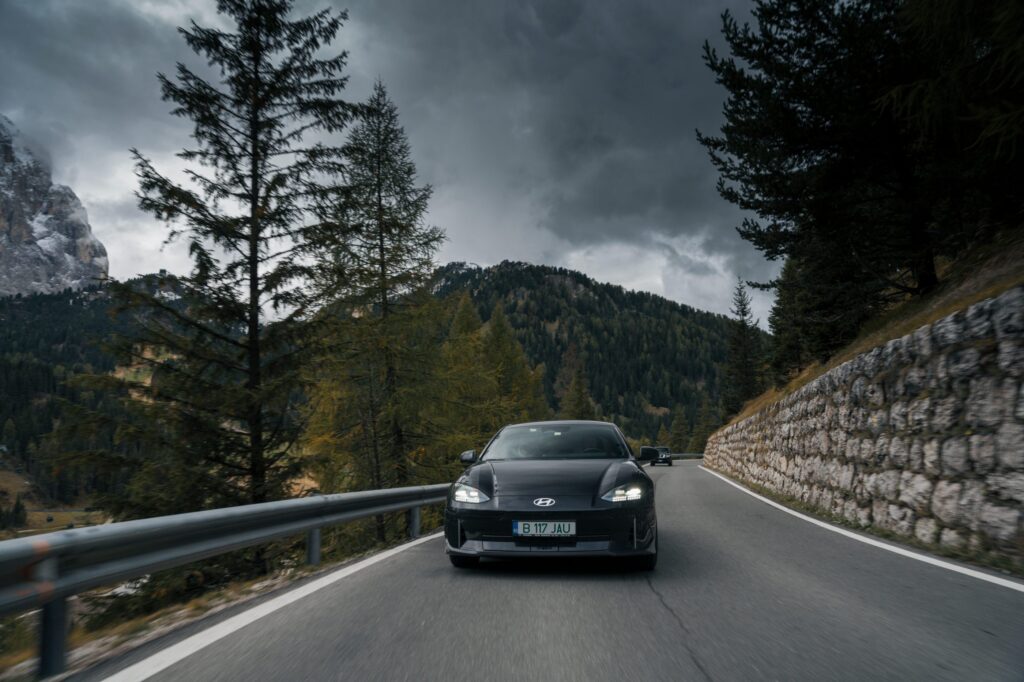
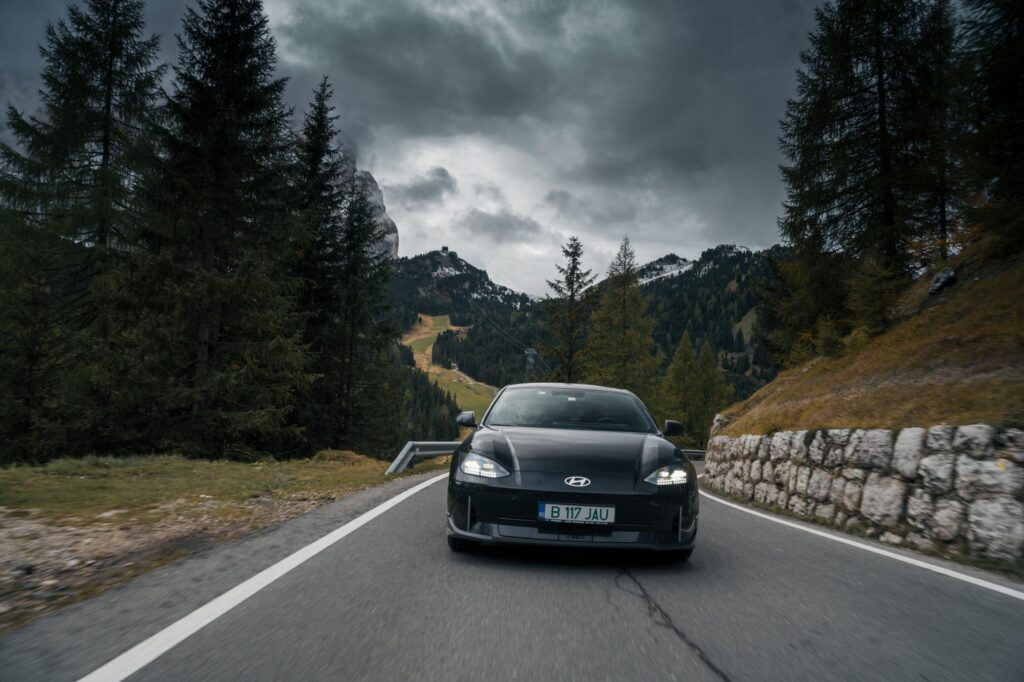
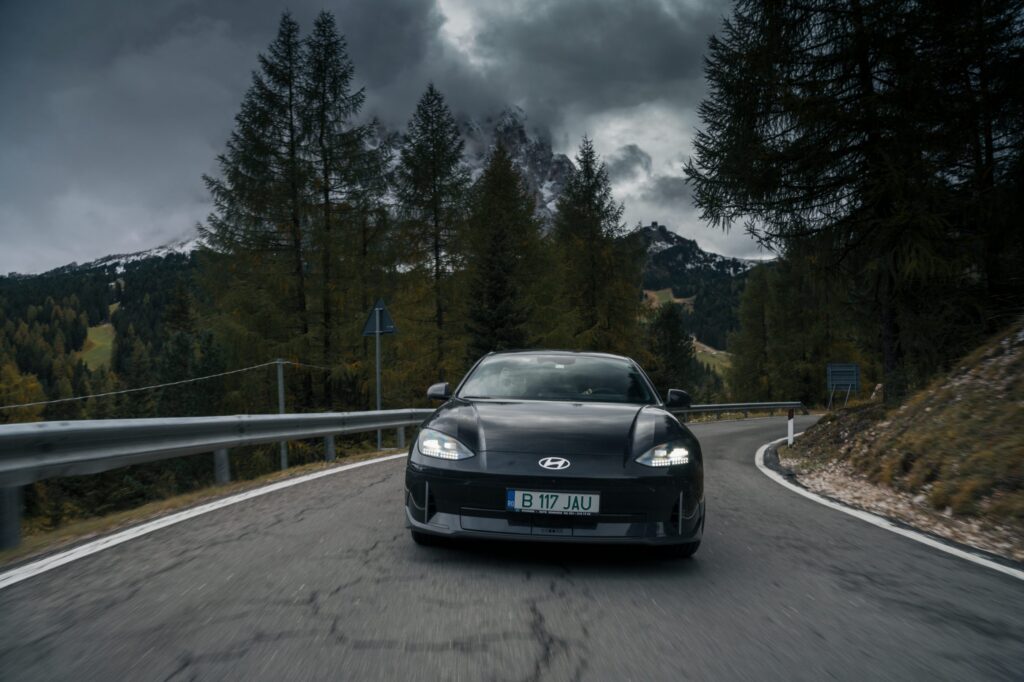
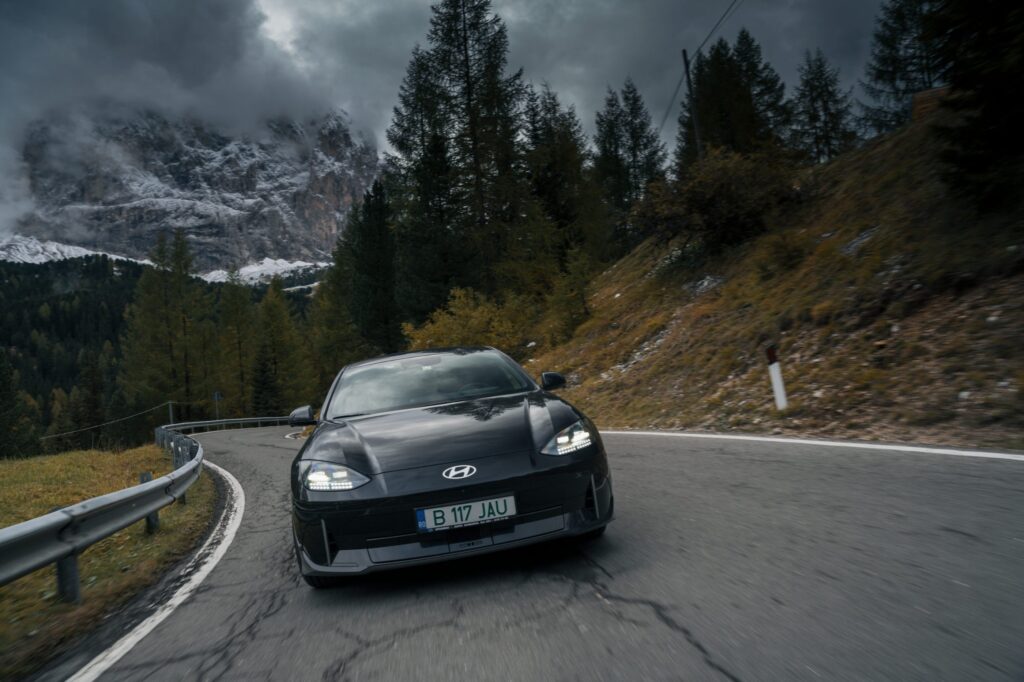
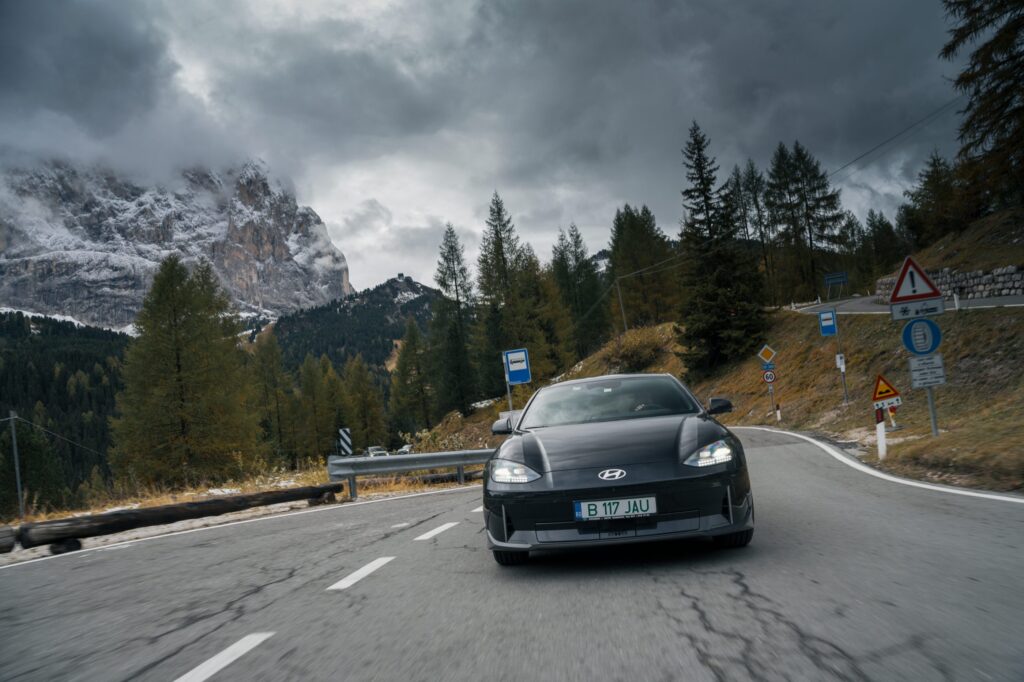
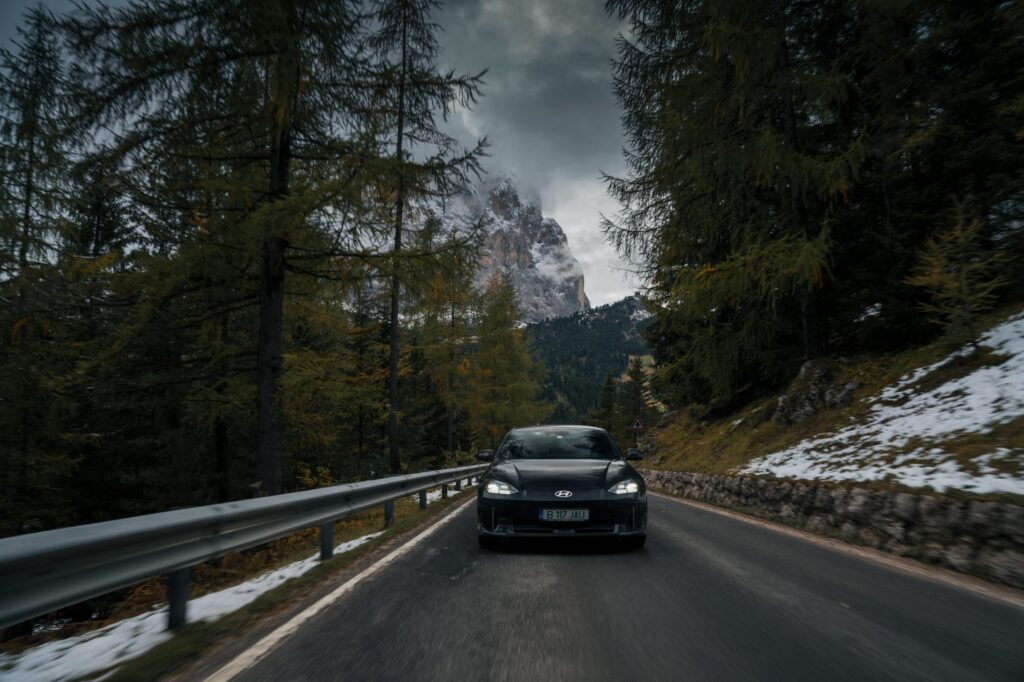
Tudor Rus (AUTOCRITICA)
The Hyundai Ioniq 6 is a curiously… good concept (not in the prototype sense). We know, it’s easier to get lost in the internecine banter picked up from the front of the block stairs, and harder to go to a dealer for a test drive.
Listen to me for a minute.
When it comes to attention and dedication to all things dynamic (not in the tire-grinding, tire-firing sense), the Ioniq 6 is on the level of a sports car. That it’s no sports car is clear, but the sum of the steering, suspension (slightly more fibrous than the Ioniq 5), chassis and braking/acceleration response is the definition of balance.
Yeah, but it’s a weird shape.
Yes, it does. Largely functional: in the long run and at the right speed, how the air falls on the dashboard will pay off on the efficiency side.More the graphs below will tell you, I can relate to the route that befriended me with the Ioniq 6 (yes, I’m that X5 40d support guy): 183.9 km from breakfast to noon, on Austrian roads, within the limits of road legislation, with a stint on a highway with compressed roadworks traffic. Consumption: 14.4 kWh/100 km. Enough for a range of over 500 kilometers.
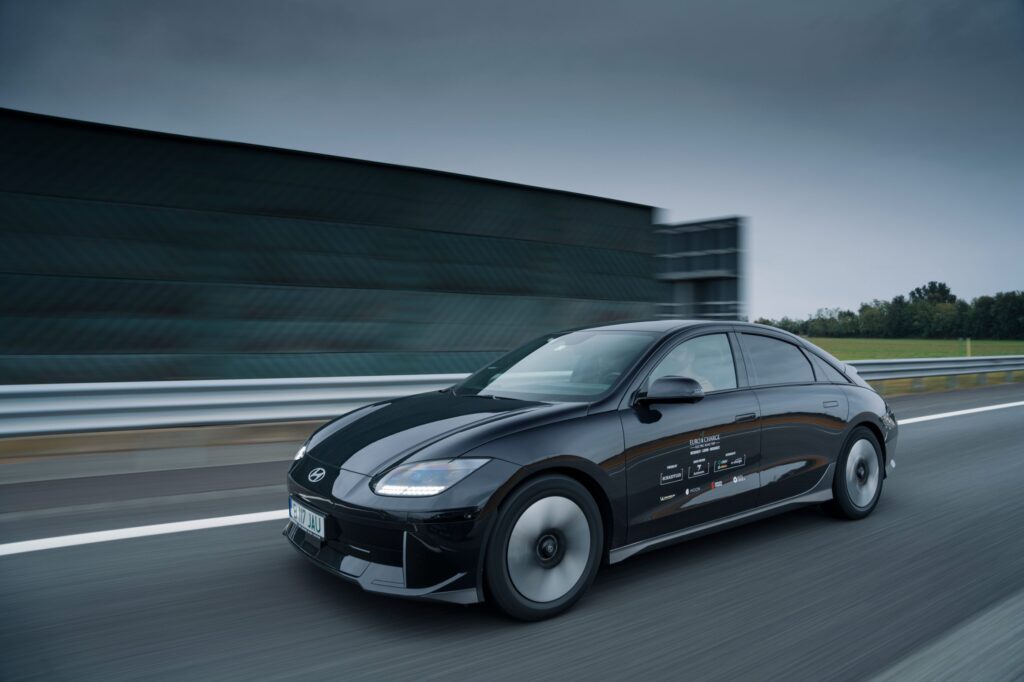
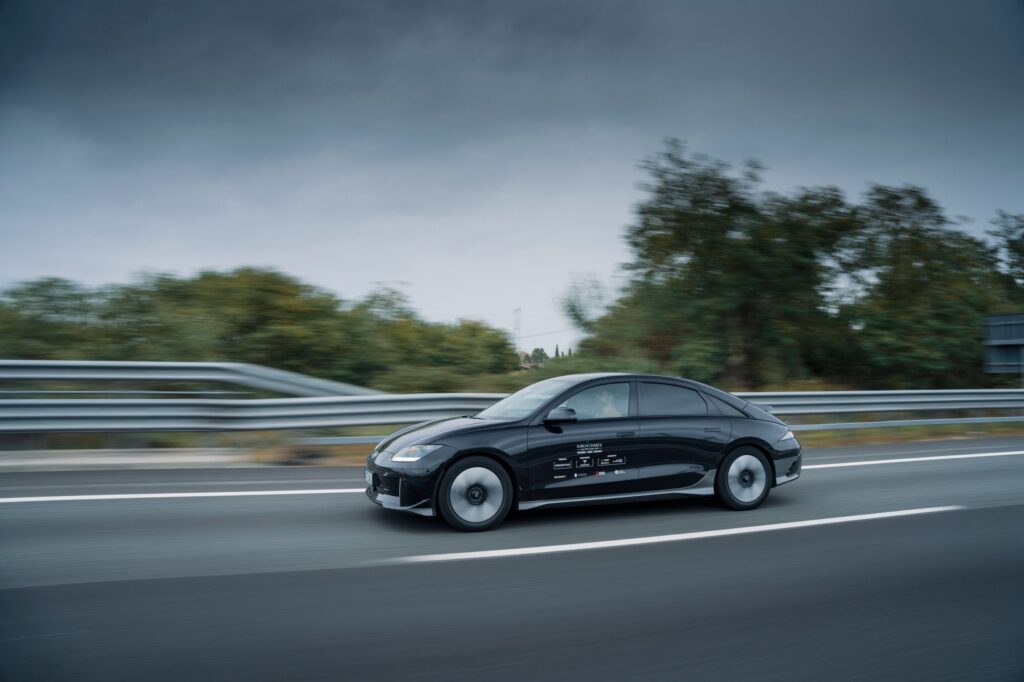
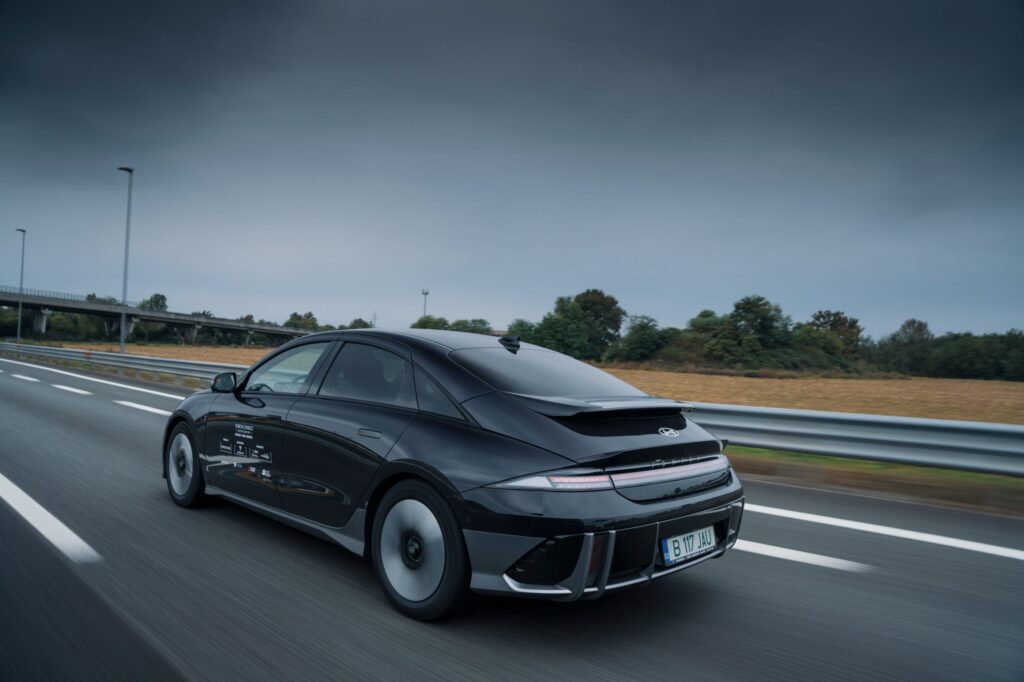
Alin Ionescu (Mașinistul)
The Hyundai Ioniq 6 is the kind of car you can’t fall in love with at first sight. It’s quirky, special, aerodynamic, but not beautiful. But once you’ve driven it 800km (say, from Italy to France) – and you realize it’s pleasant on the road, comfortable, well-equipped and has more range than you can carry non-stop – you’ll look at it with new eyes.
With an aerodynamic coefficient of just 0.22 (0.21 if you opt for cameras instead of rear-view mirrors), the Ioniq 6 glides down the highway with a very satisfying serenity. Rolling noise is low and aerodynamic noise almost imperceptible. What’s more, fuel consumption remains below 20 kWh/100 km, even at a steady 130 km/h (where most electrics lose significant percentages of range).
Like any South Korean model, the Ioniq 6 is well equipped. The Level 2 autonomous driving system works flawlessly and keeps the car centered between markings, recognizes speed limits and automatically intervenes on autopilot and, most impressively, can change lanes autonomously. It all adds to the overall impression of comfort – especially over long distances, as we did on some EUROCHARGE days.
Although it is a very balanced and pleasant car, one of the Ioniq 6’s main selling points remains its charging power of up to 230 kW. Thus, as we experienced several times in the two days we drove it, the Hyundai needs only 18-20 minutes to charge from 10 to 80%, thus storing energy for another 350 km.
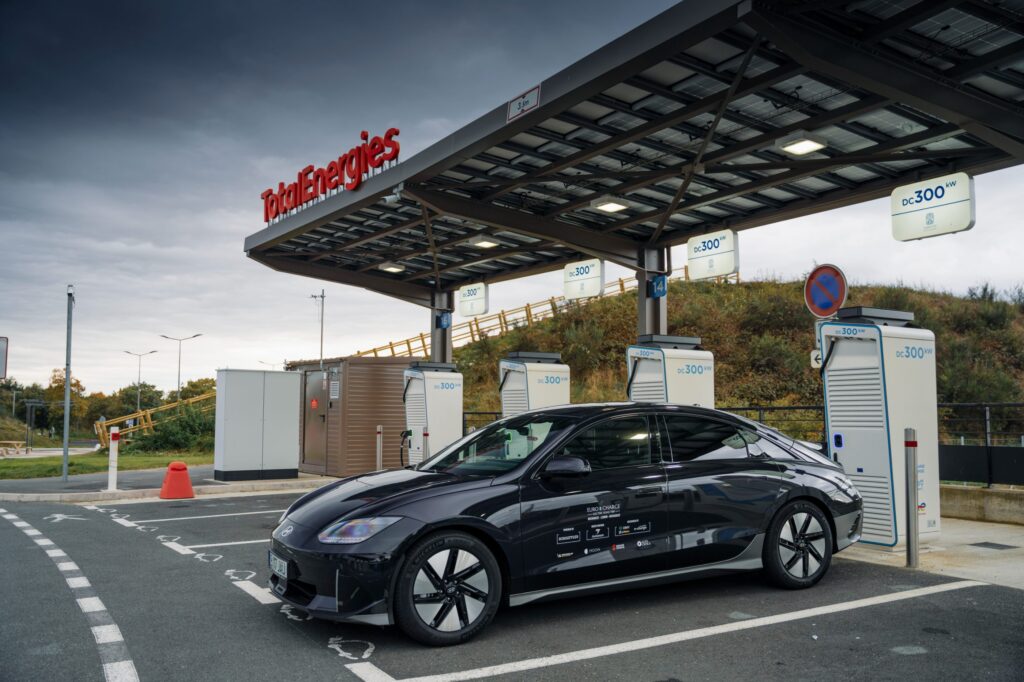
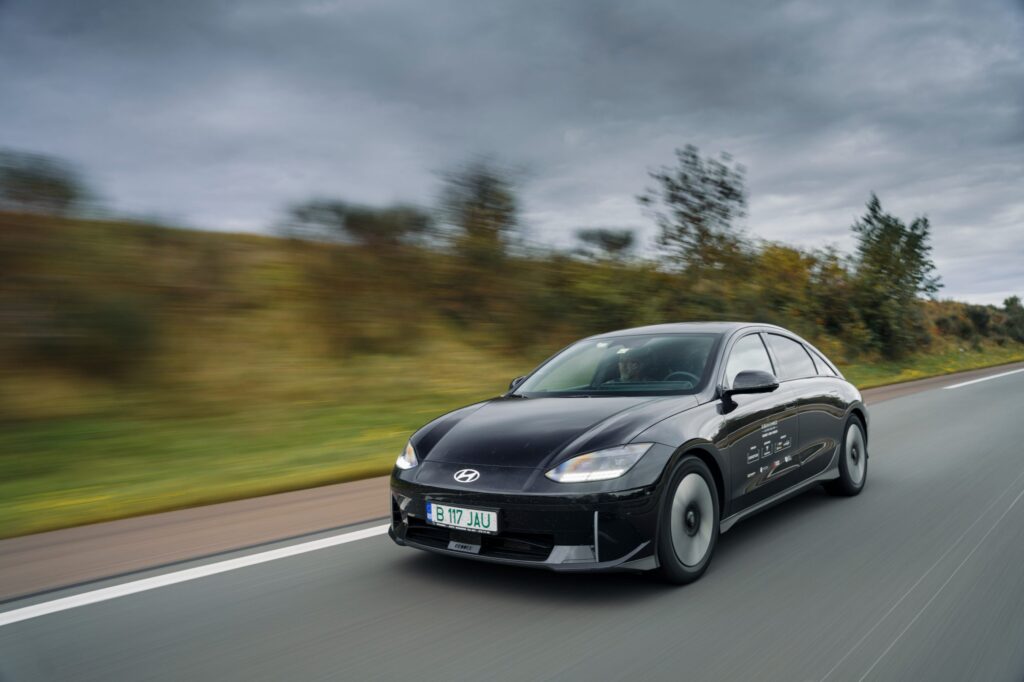
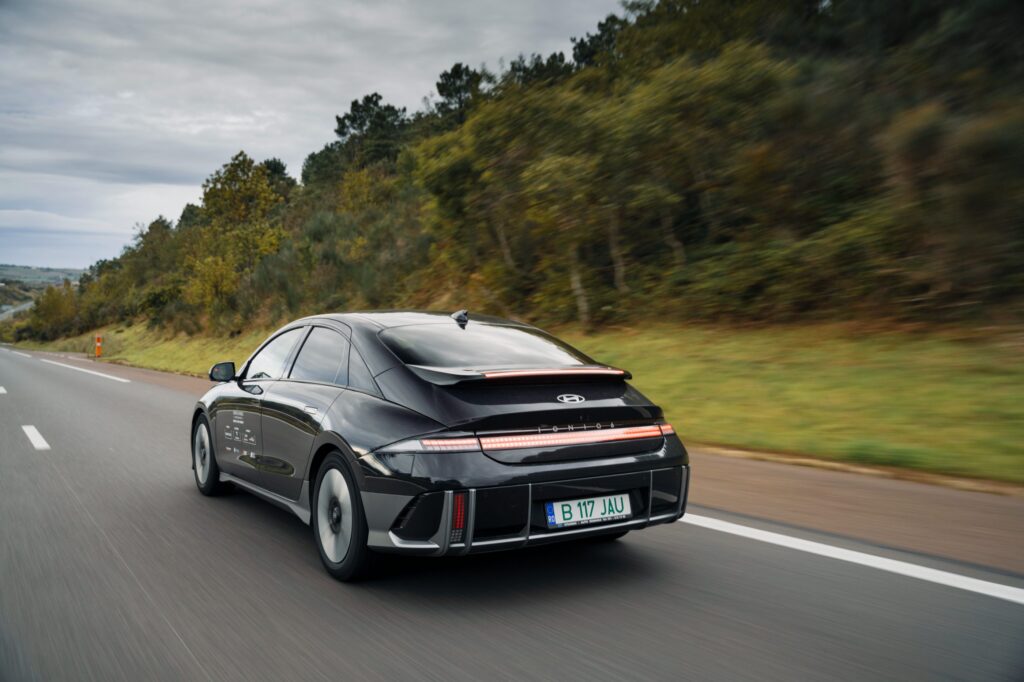
Constantin Ciobanu (AUTOCRITICA, Adevărul Auto)
What can I say, a privilege to have the model on a +1,000 km stage. If this tour has taught us anything, it’s that an 800V platform is what you need if you want an electric vehicle for long-distance travel. When you’re pulling from 200+ kW stations, charging times are a joke.
Even if looking from the back, and I have looked at this model from the back for some time when I was driving other models in EUROCHARGE, it reminds you of a 930 Turbo, I appreciate the courage to propose a bolder design. The same bravery vis a vis the layout I found in the interior, and I appreciate the freedom to design differently as long as you don’t want to reinvent me as a user/driver.
The Ioniq 6 also wins when it comes to interior space, something bordering on opulence. I would have liked some of the exuberance to have been matched with more carefully chosen materials. The big gripe is the seats. They’re not what you need for long journeys, although that’s one of the car’s strengths. After 200 km, my body was already complaining about one thing after another. It’s the only element that contrasts strongly with the rest of the car, because the soundproofing and suspension settings are also good.
The conditions in which we drove the Ioniq 6 were among the harshest we have ever encountered. The periphery of a hurricane caressed us half the way with headwinds of around 30mph and gusts of 90mph. This showed in the consumption, but nevertheless we felt no threat of running out of kW.
The design pays a small tribute when it comes to ergonomics, and here I’m talking about the trunk opening, which is a bit narrow in the cargo slot.
But I can say that the Ioniq 6 is one of the most mature electrics yet.
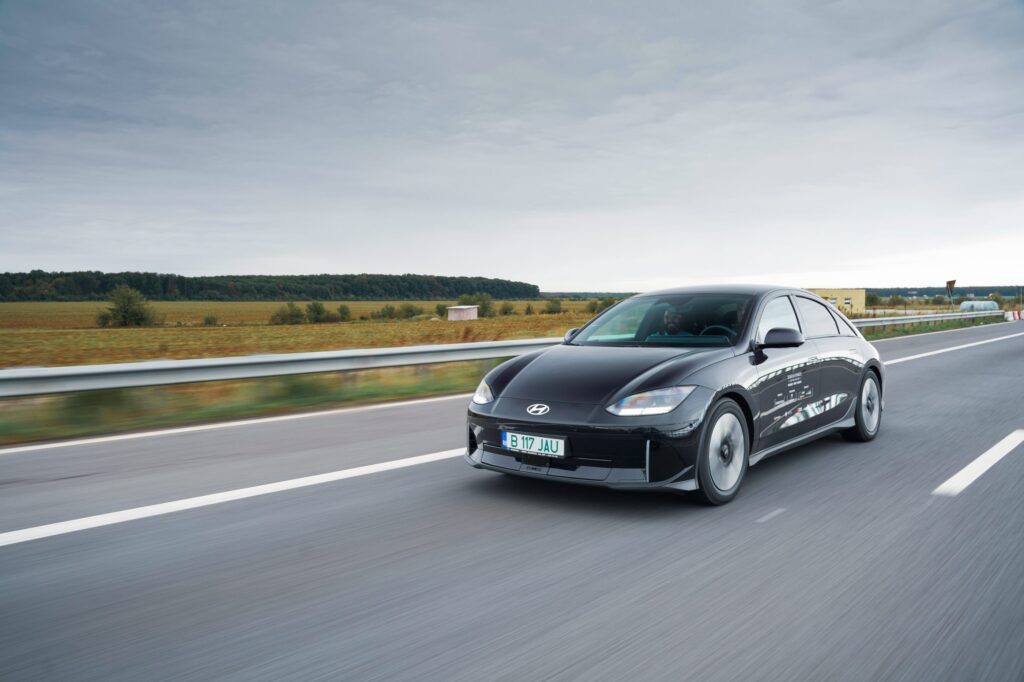


Adi Dima (eblogauto)
The Hyundai Ioniq 6 is one of the cars on this tour that makes you seriously consider buying an electric car. The other one that makes you have similar feelings costs over €100,000, so the Ioniq 6, at around €45,000, seems like a real bargain.
The aerodynamic profile that makes it fuel-efficient, especially when running at highway speeds, gives you complete confidence in the South Korean model. Where other electric cars struggle with the wind blades, the Ioniq 6 glides through the atmosphere like a seagull diving for fish. Yes, the seats may not be the most comfortable, yes, the black interior isn’t the most appealing, but Hyundai’s electric model makes you feel actively involved in the driving process, something that, sadly, isn’t characteristic of electric cars in general.
The 800V architecture also makes charging a dream, and the 74 kWh battery gives you about 400 km of range in almost any conditions. The 229 horsepower put to the pavement by the rear axle is enough to both maximize your range and have a little fun if the mood takes you.


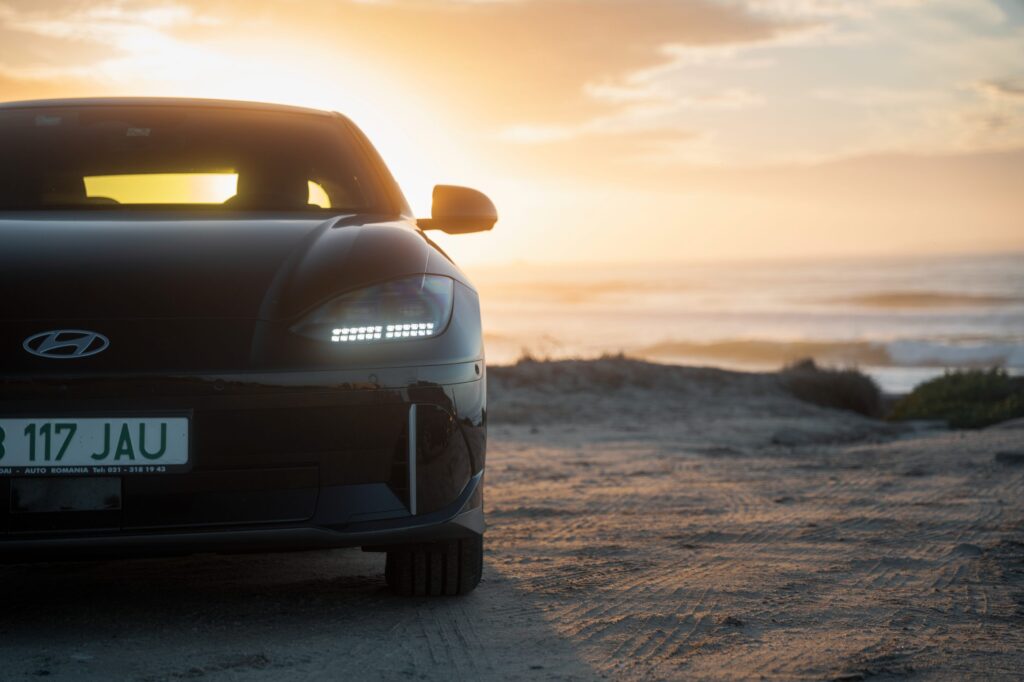
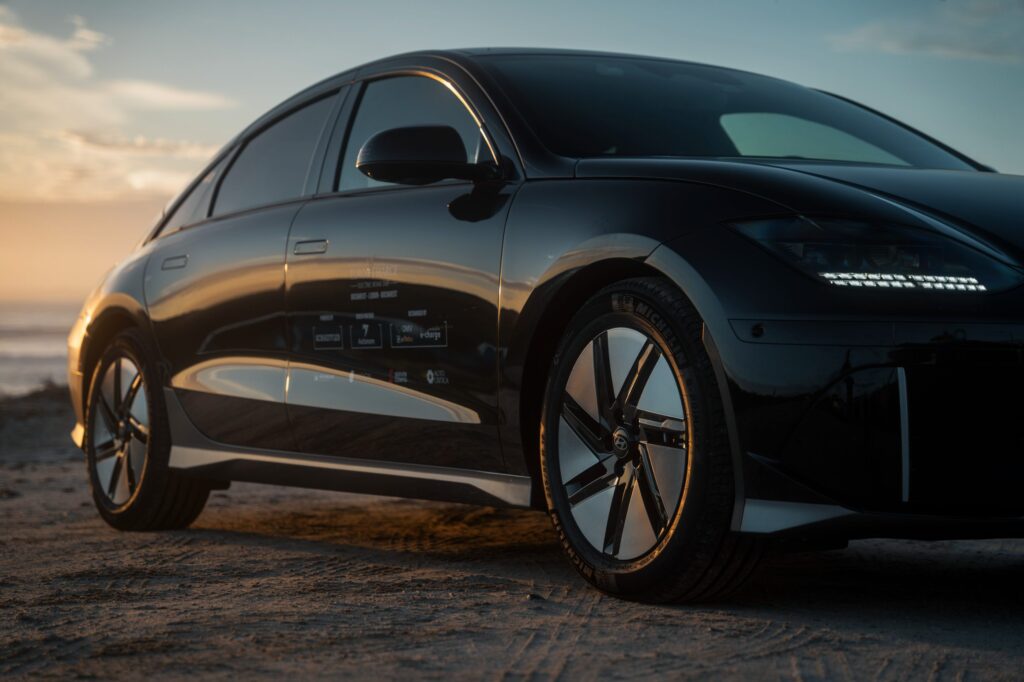
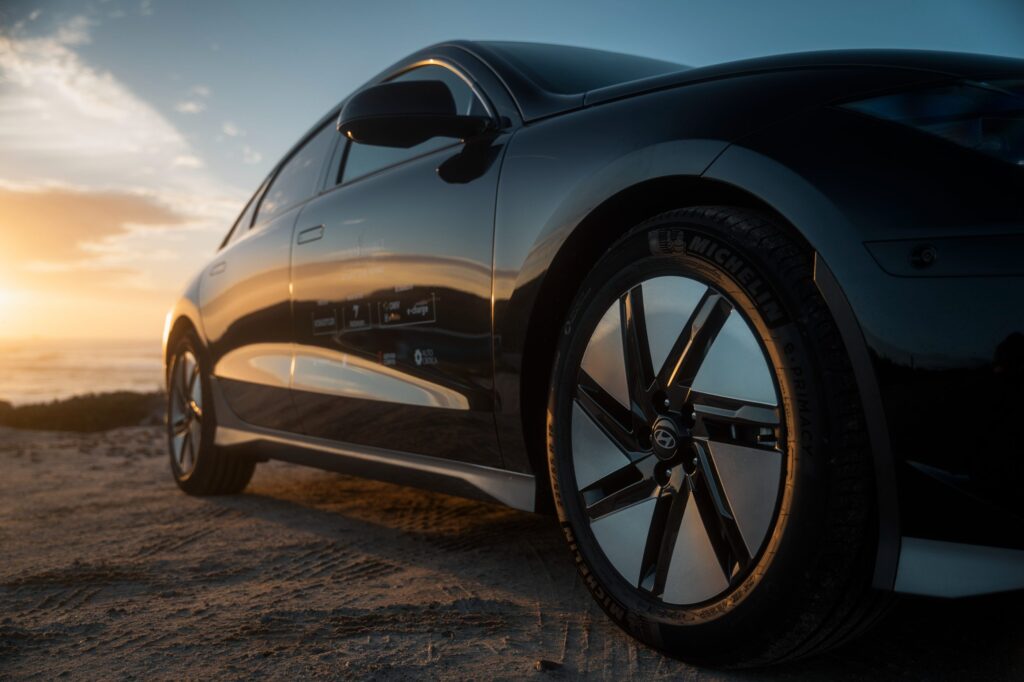
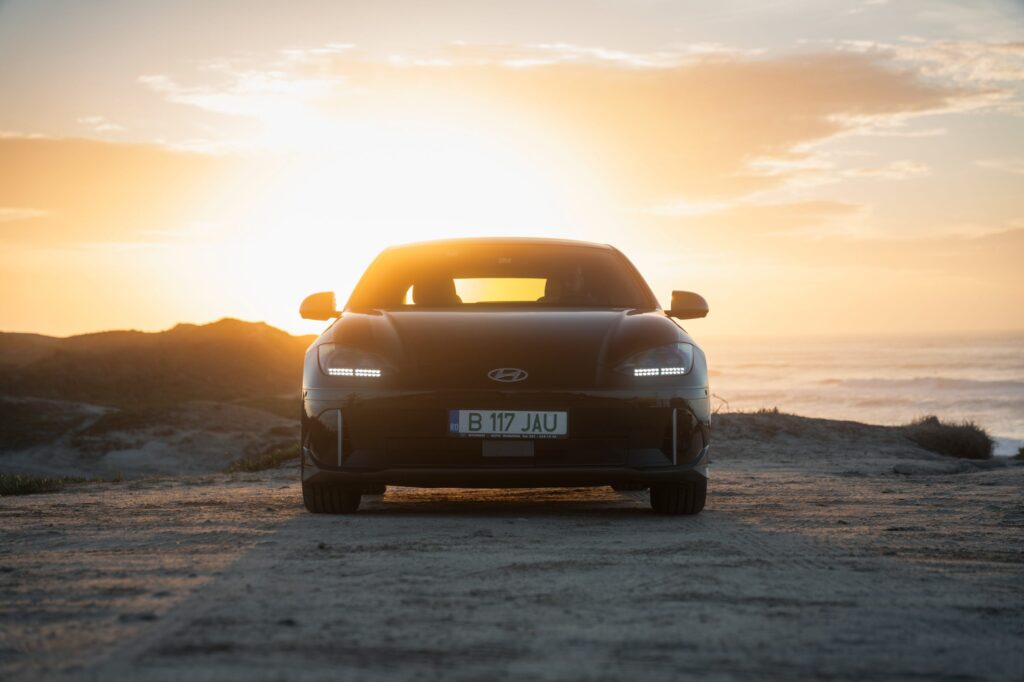
Julius Constantinescu (Digital Storyteller)
The Ioniq 6 tries to mimic the shape of the Porsche Taycan, it rides like a sports car, but at the same time costs just €40,000 – so it makes sense to expect some compromises.
I’m going to start like Cicero, though, who was bragging about you a quarter of an hour before he got to “a drunkard, a womanizer, a disgrace to the Republic!” The Ioniq 6 really is a sports car: it’s spirited, sticks to the road and is extremely maneuverable. Being electric, it’s off the stoplight before even a seasoned cabbie can start honking. It also has a sensational sound system, practically the only thing better about the Ioniq than the Taycan.
And now let’s look at the “a true disgrace to the Republic” part. First of all, it’s very low, which is ok when you want to put the chick on the freeway with no speed limit, but in real life even the Matiz’s headlights blind you on the street. The display on the dashboard is very slow, it actually has a delay of 2-3 seconds – I haven’t seen anything like it since I was on the internet on my Pentium III. And that’s not all: it’s so colorless, you feel like you’re in Linux.
The version I drove had ambient lighting (it’s available as an option), but at night, if it’s closed, it’s dark as you can poke your fingers in the eyes. Basically all you can see inside is the screen running in Linux and the dashboard also in black and white, mimicking 80s-90s models.
I didn’t think the assistance systems were great either, I turned them off because they were more confusing than helpful. I couldn’t figure out how to disable the audible warnings, which drove me crazy because on the Ioniq 6 they all beep like Micutzu on iUmor.
All in all, the Ioniq 6 is a cheap sports car that runs very well, mimics Porsche on the outside and burns basic-retro on the inside, like a racecar.
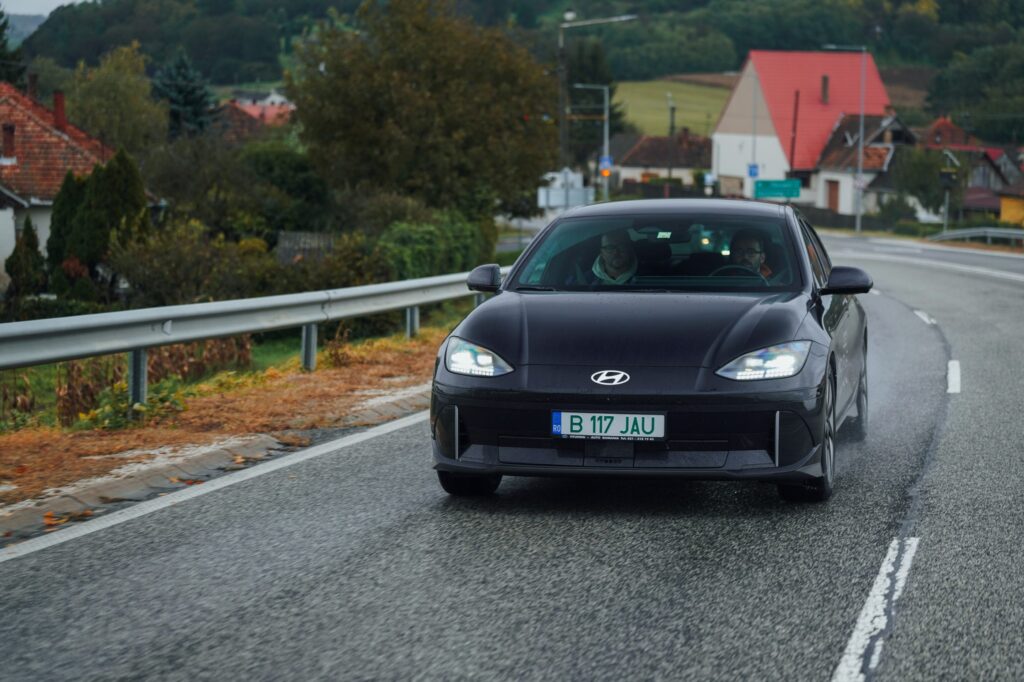
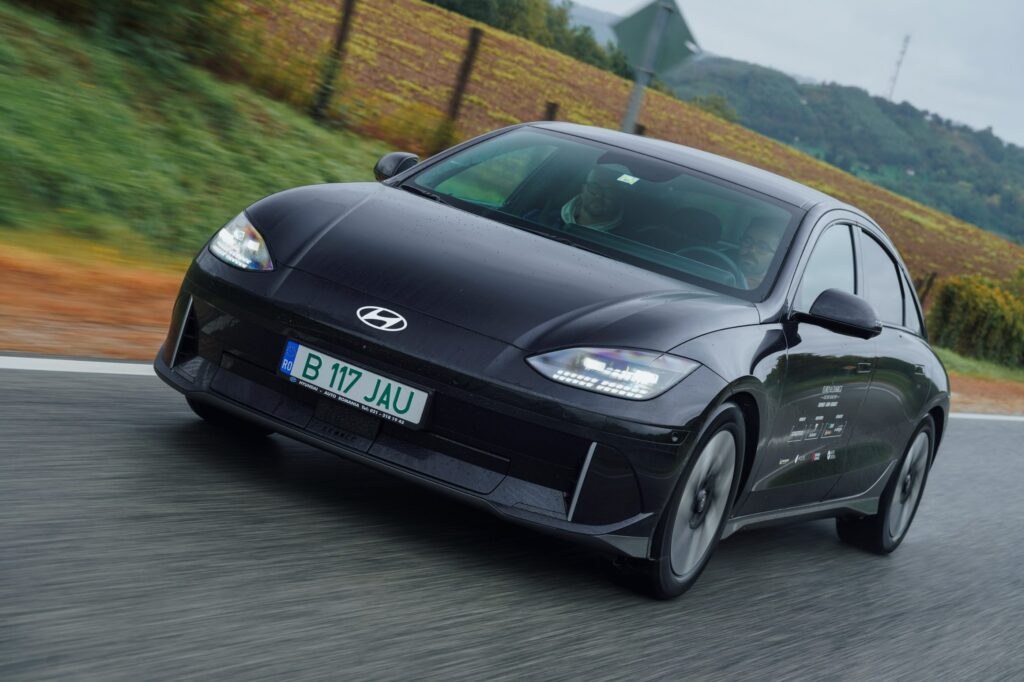
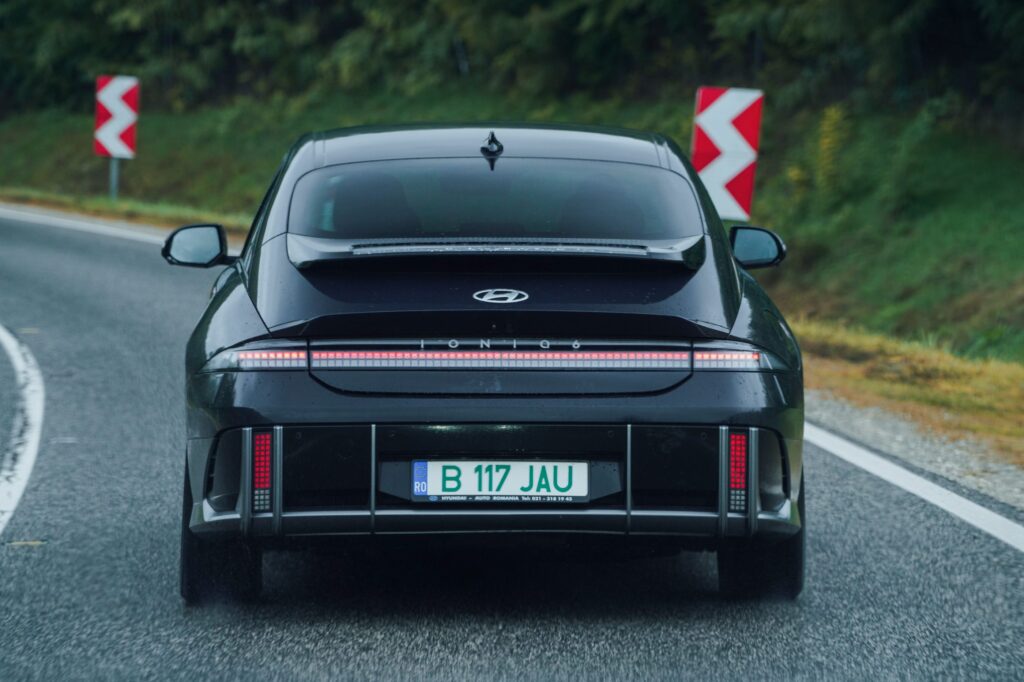
Laura Antonov (LaChicBoutique)
At the end of the lineup in EUROCHARGE, I realized that I had two favorites at opposite poles – on the one hand, the most expensive car of the tour, the Taycan, for which I still dream of winning the Lotto, and on the other hand, the Ioniq 6, one of the most affordable cars of the tour.
So down to earth, the Ioniq 6 is the electric car I would buy and recommend to anyone.
Hyundai Ioniq 6 is the last car I drove on the tour, a model that instantly caught my attention. It has a distinctive design that you either fall in love with at first sight or you crinkle your nose and wonder what the author meant.
If you like it and think it has a sporty and stylish design, we think so too. If you think it’s oddly shaped, perhaps you should consider that this aerodynamic design contributes to low energy consumption and therefore a ‘dream’ range. And not only that, the Ioniq 6 actually floats, smooth and precise.
All the figures about the Ioniq 6, from price to range, make you smile, whether you like the design or not. For example, the 800-volt battery architecture makes charging times shorter than I needed to get back on the road after each charging stop.

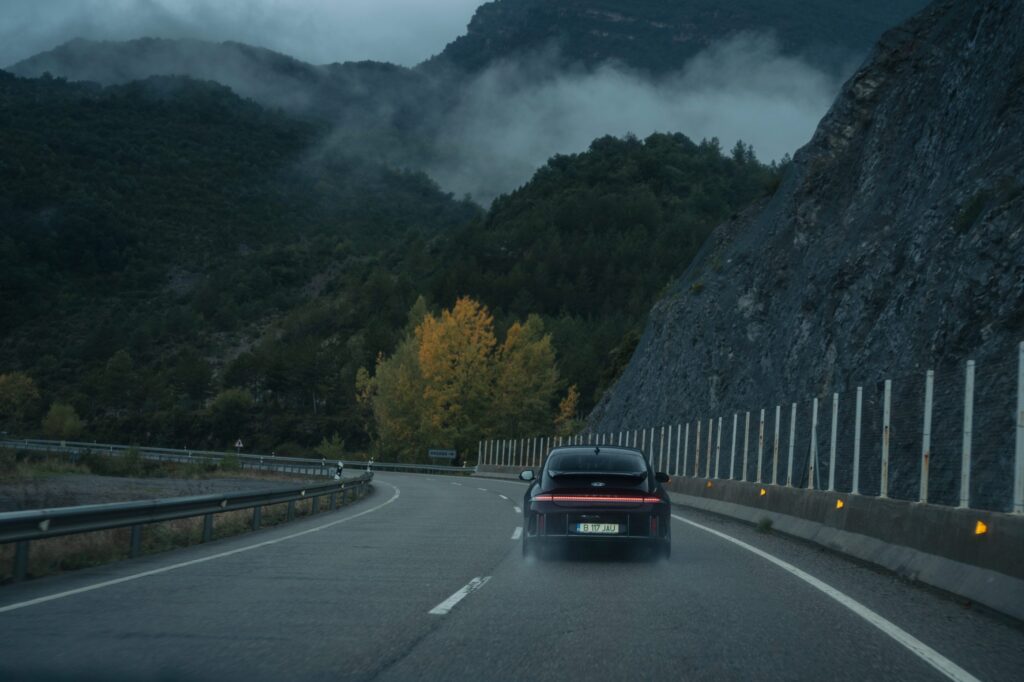
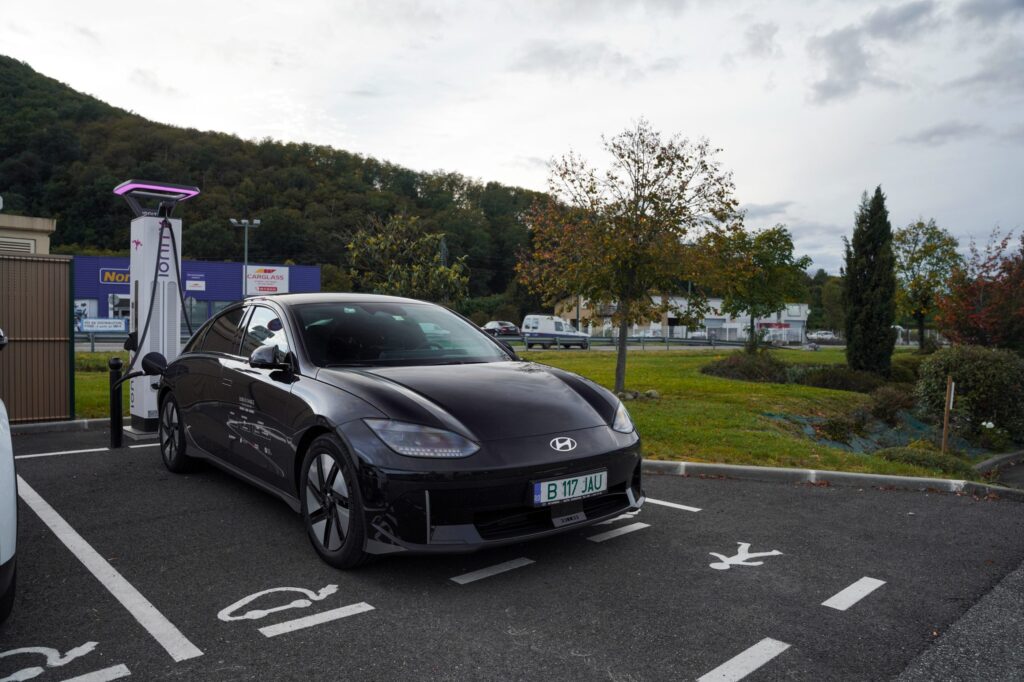
Technical specifications of the car that accompanied us in EUROCHARGE by Schaeffler
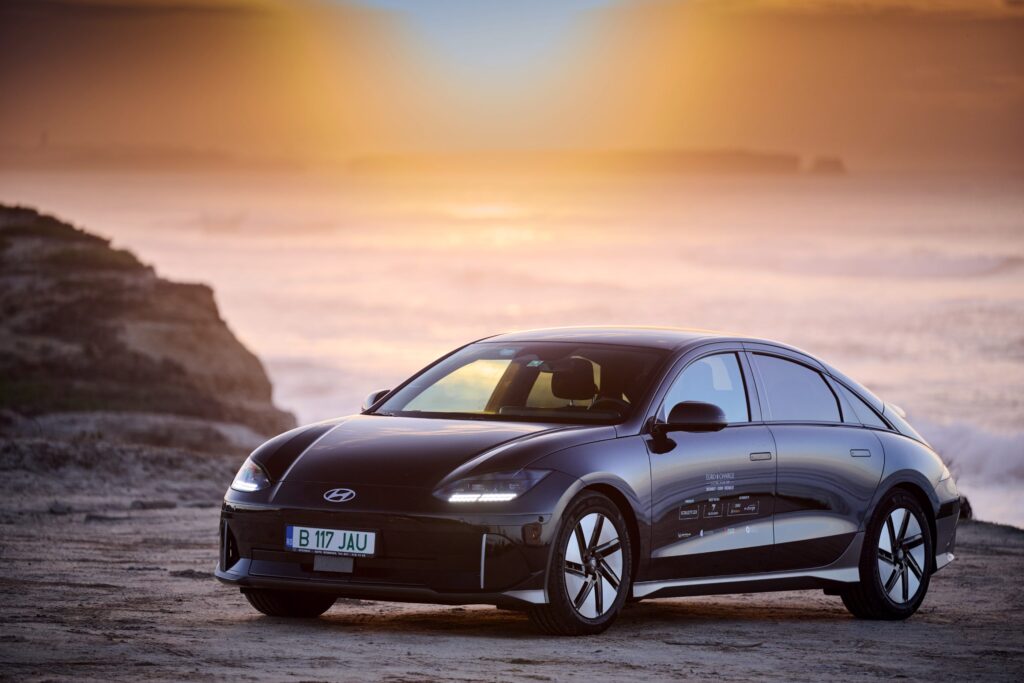
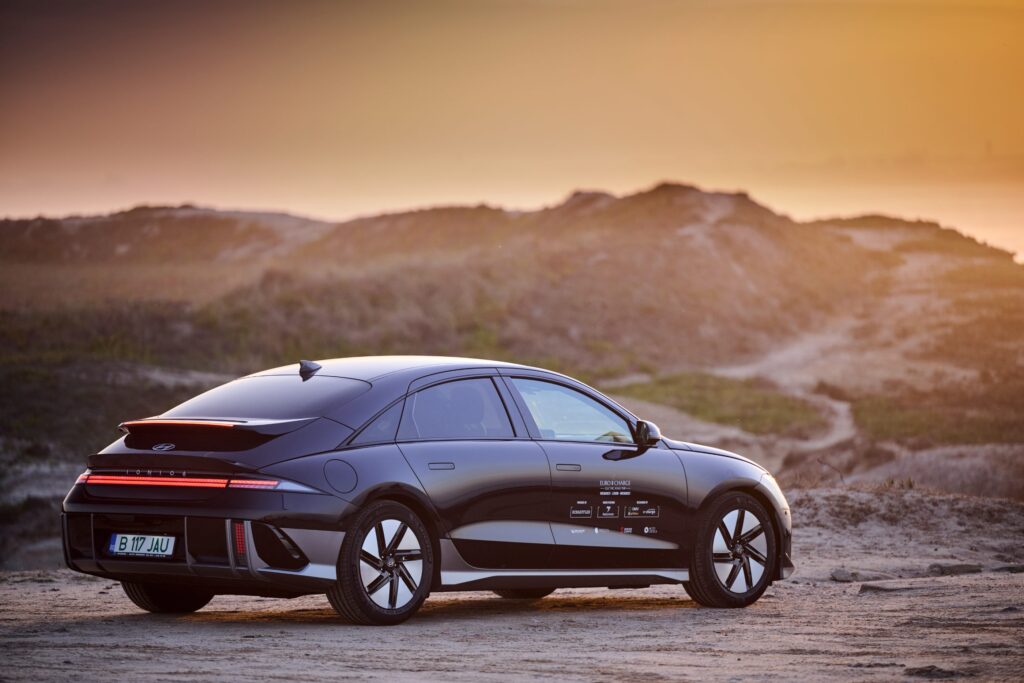
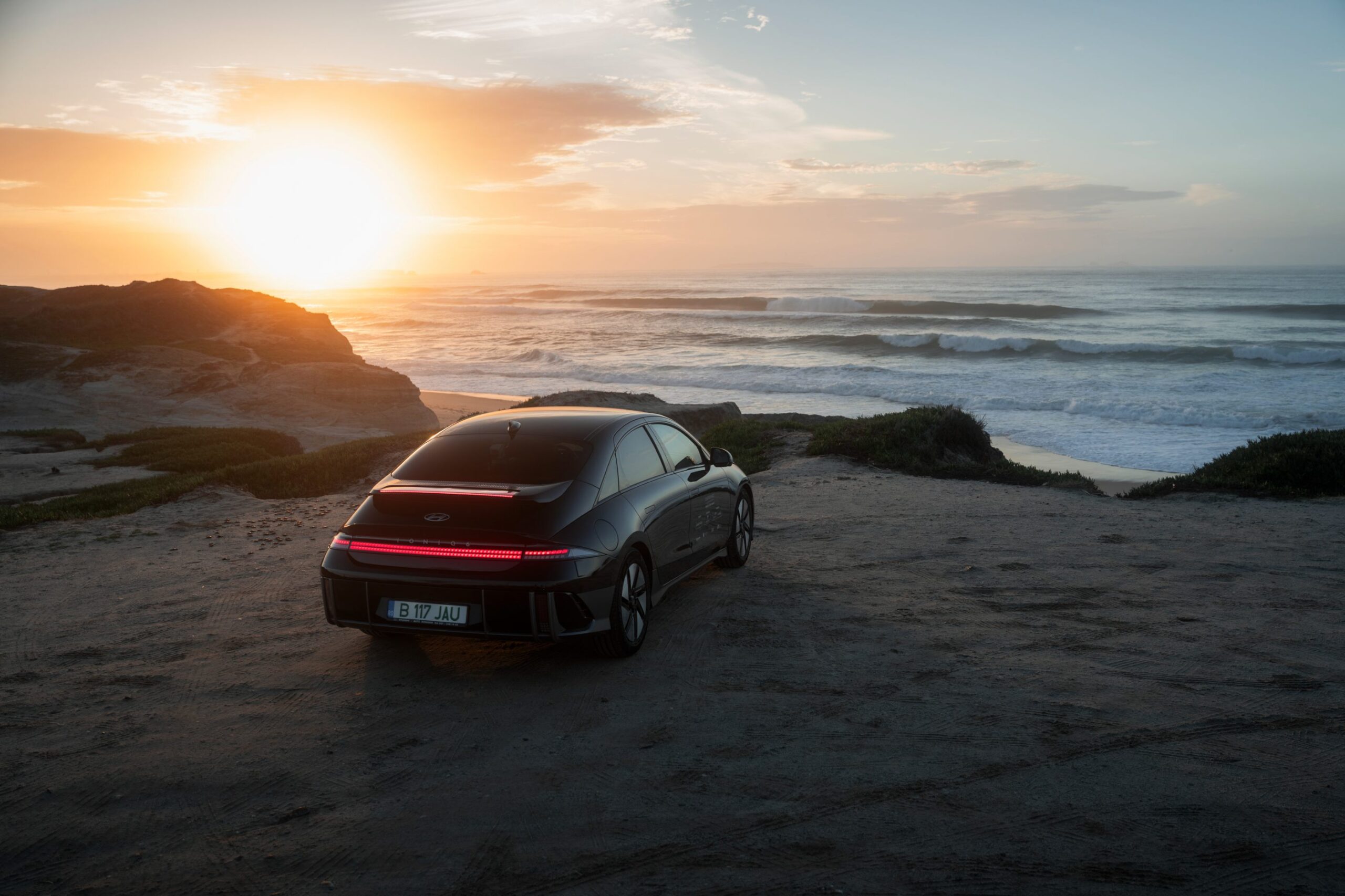
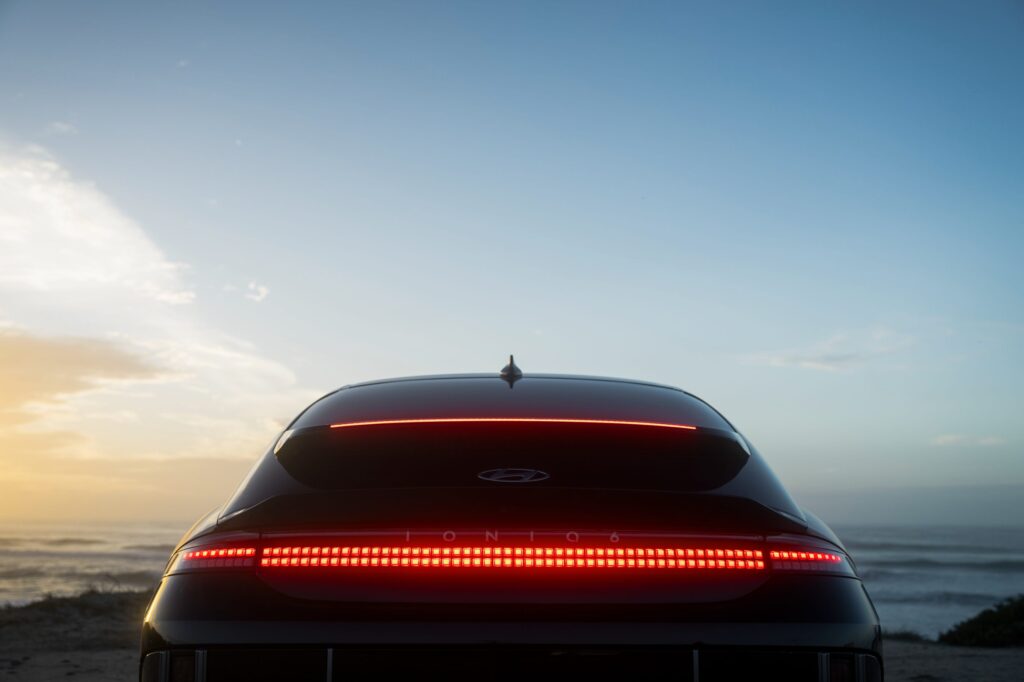
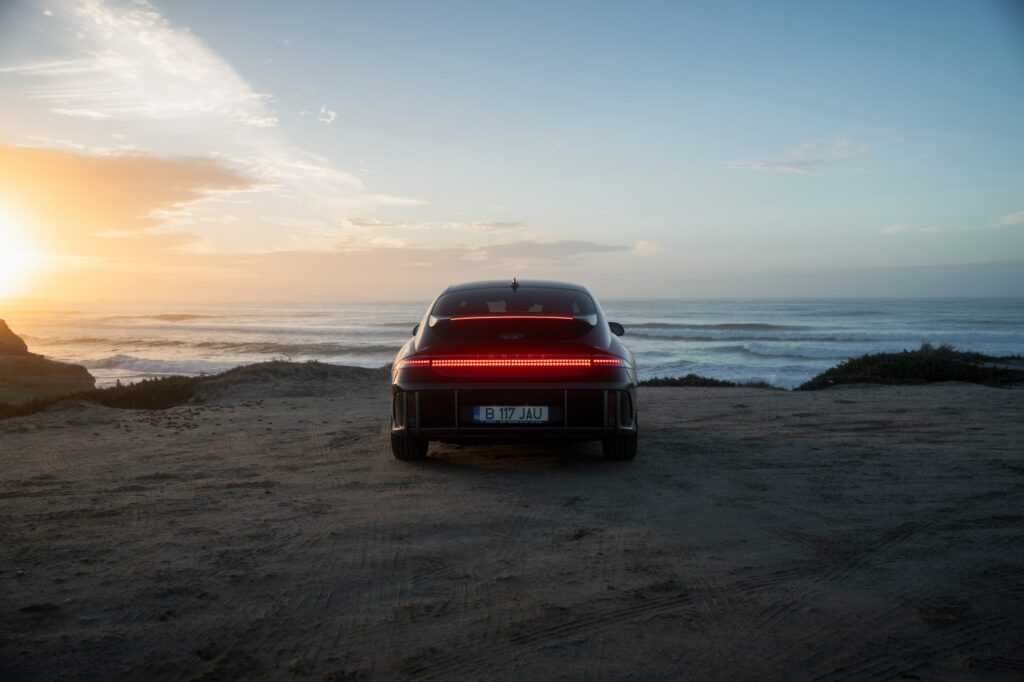


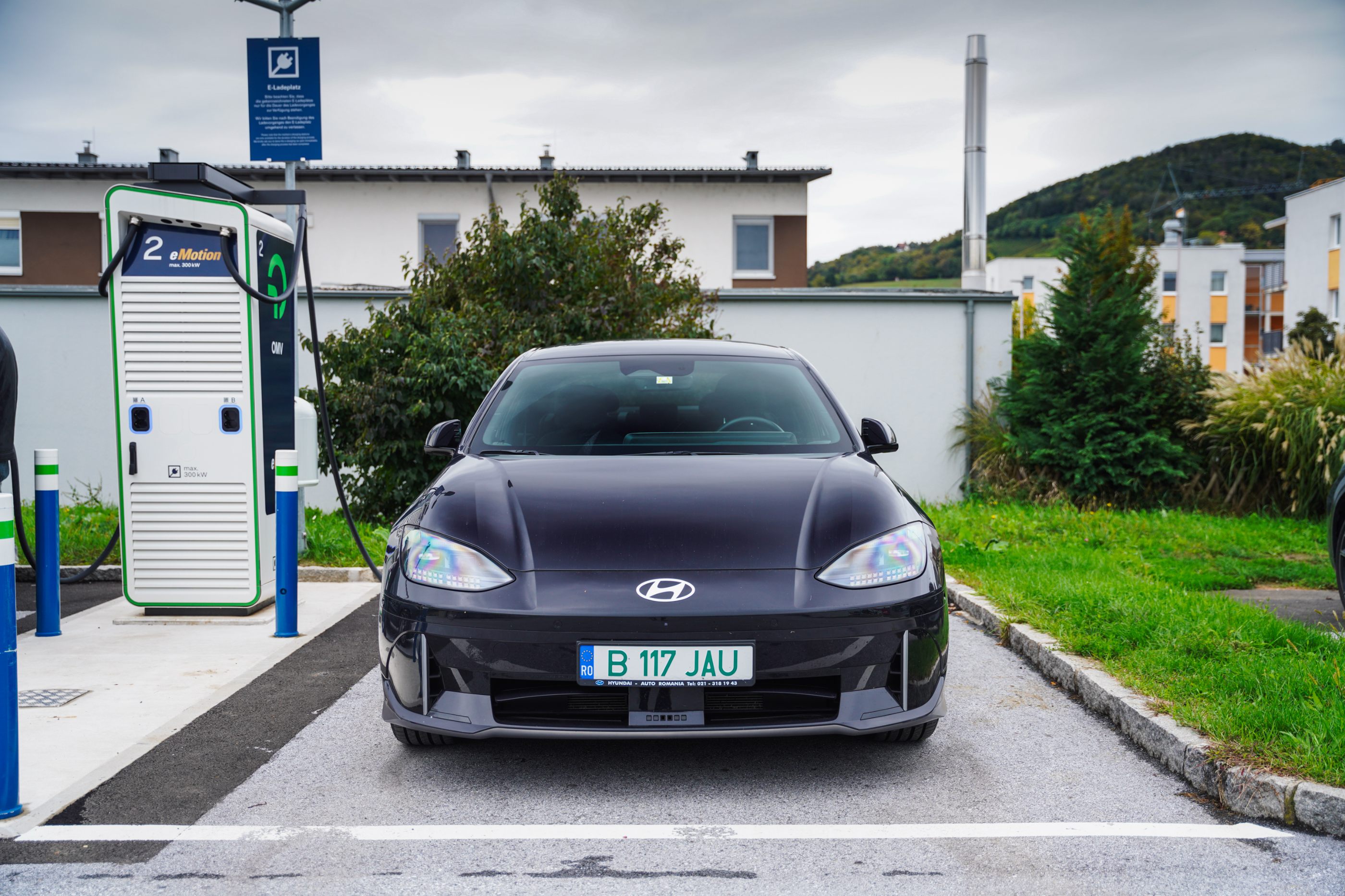
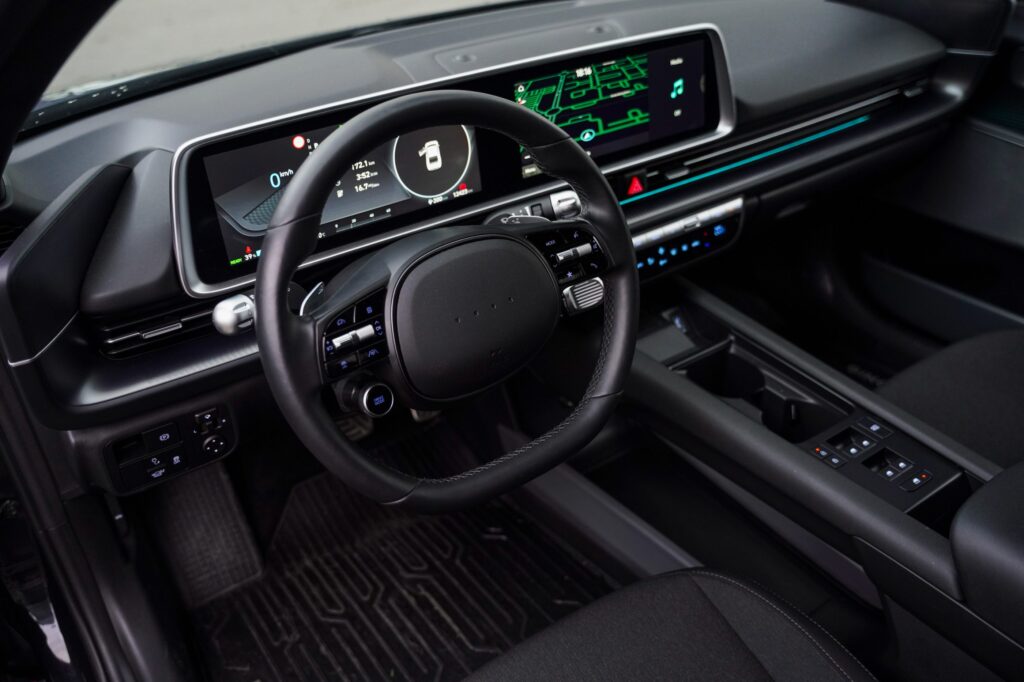
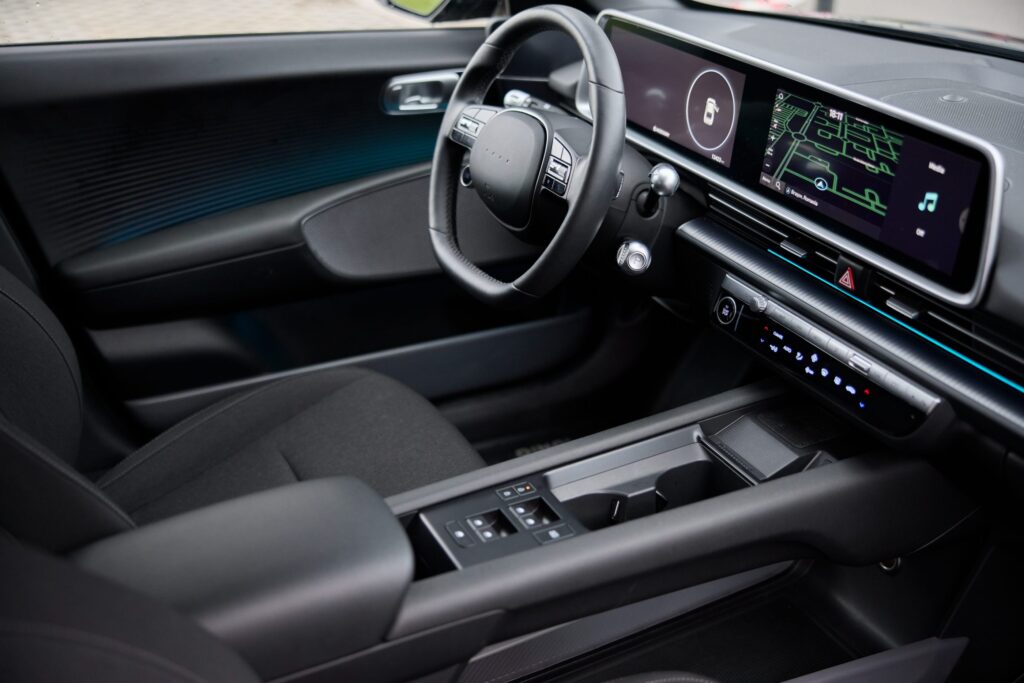
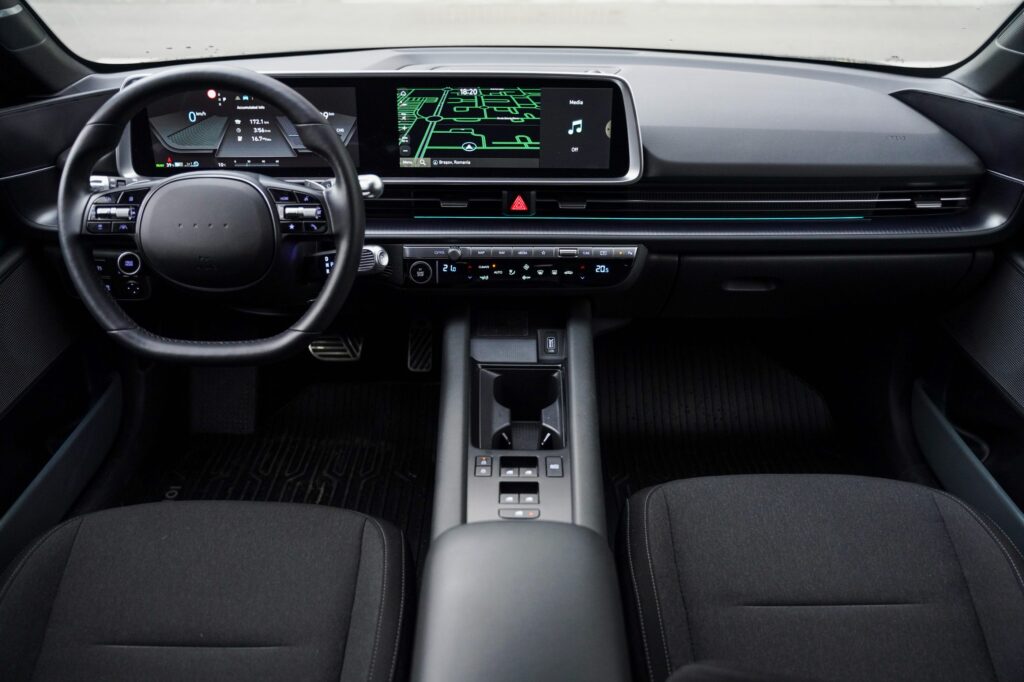
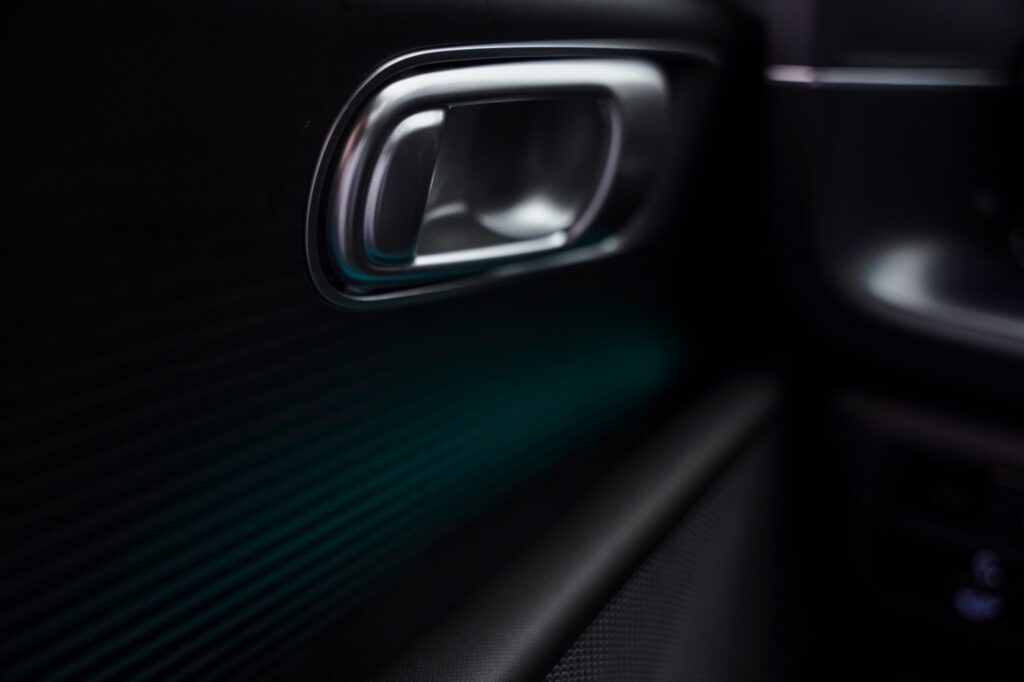
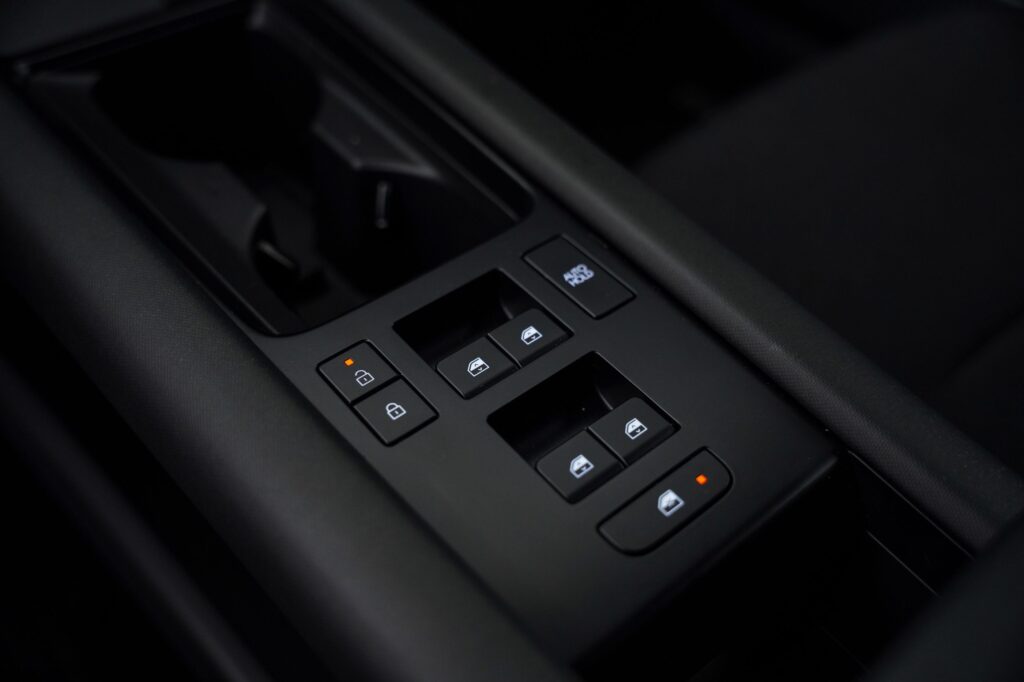
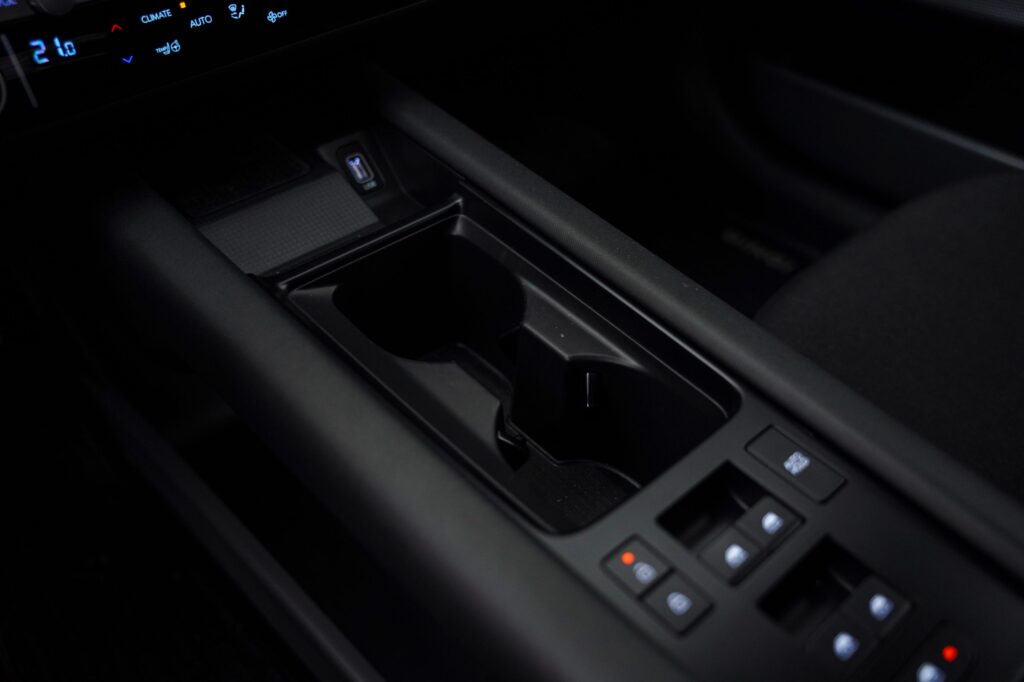
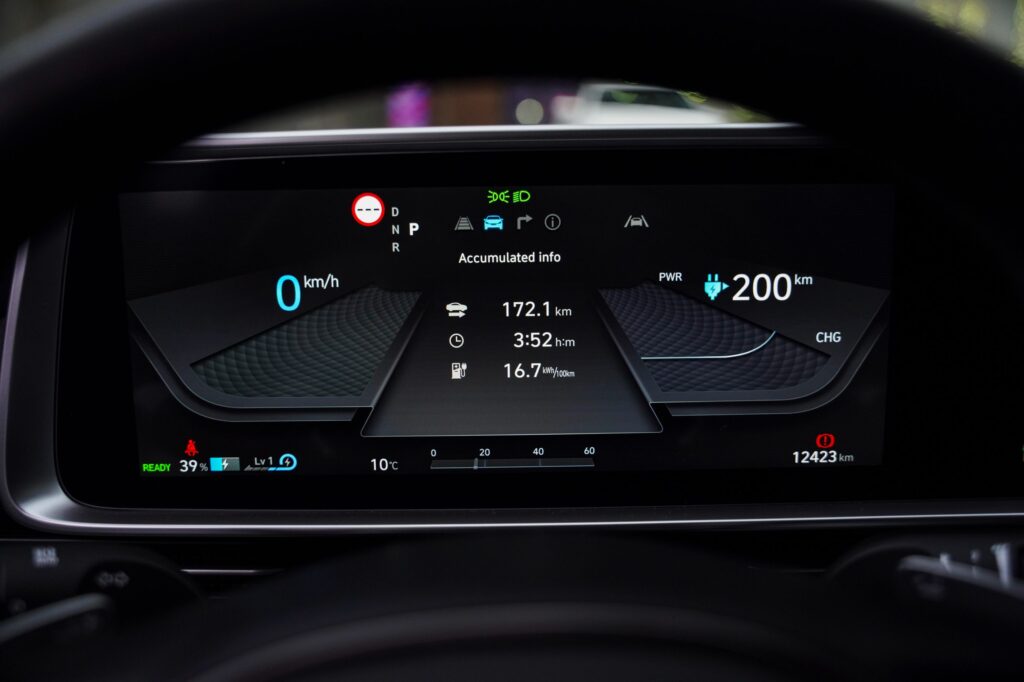
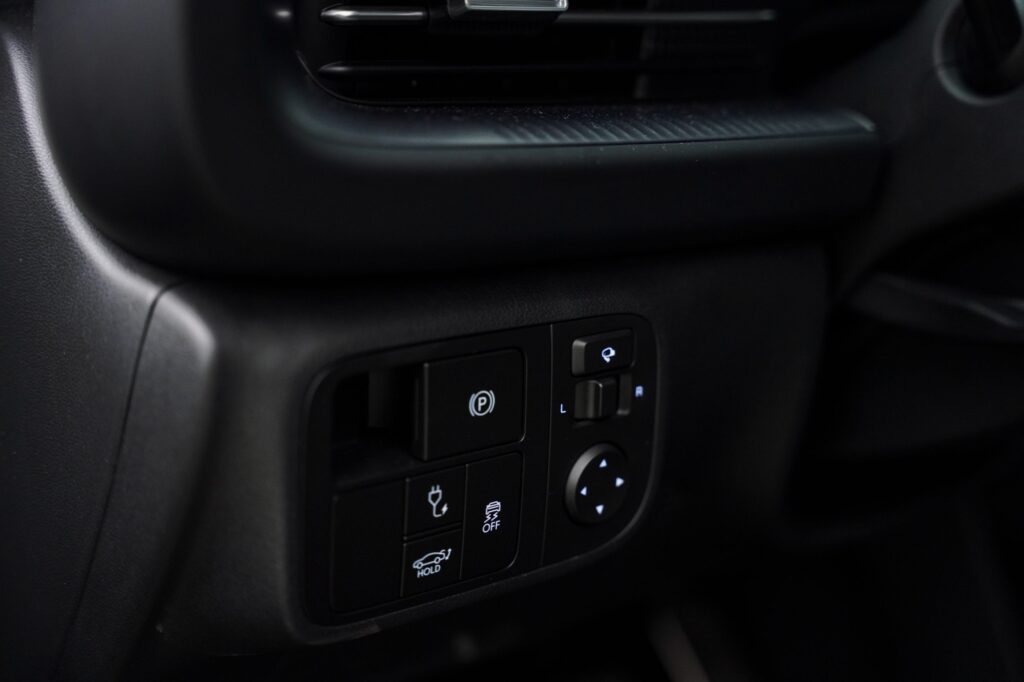
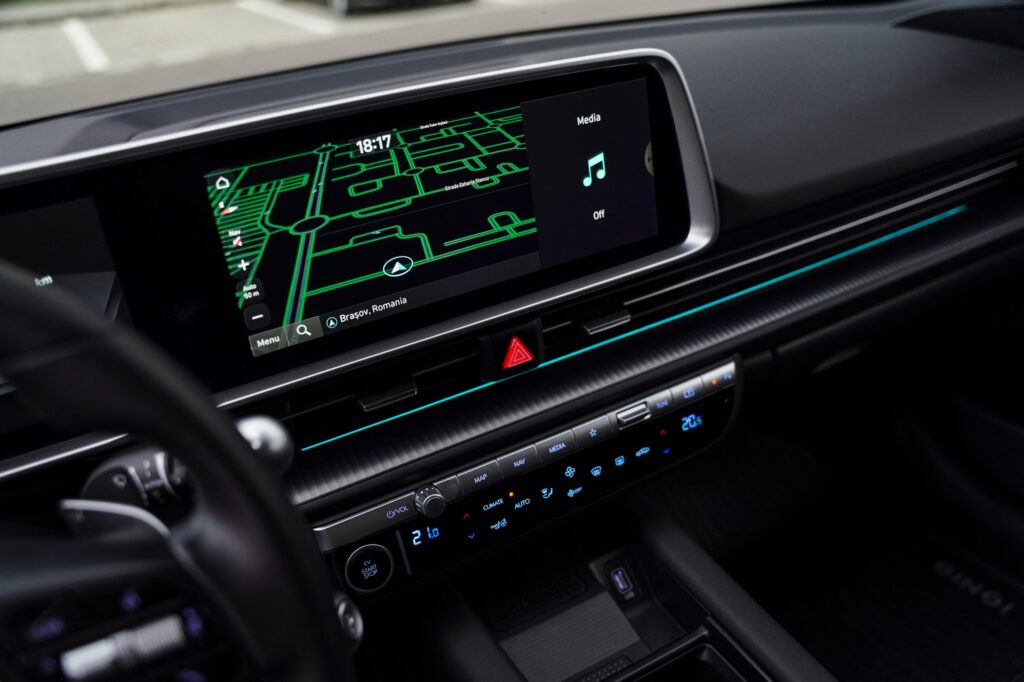
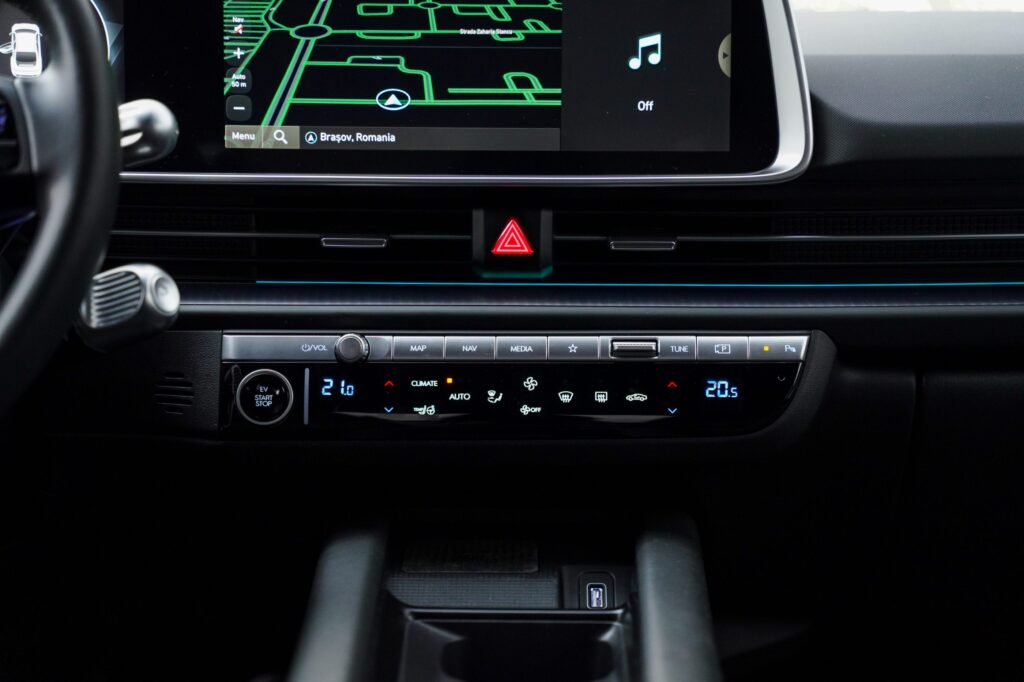
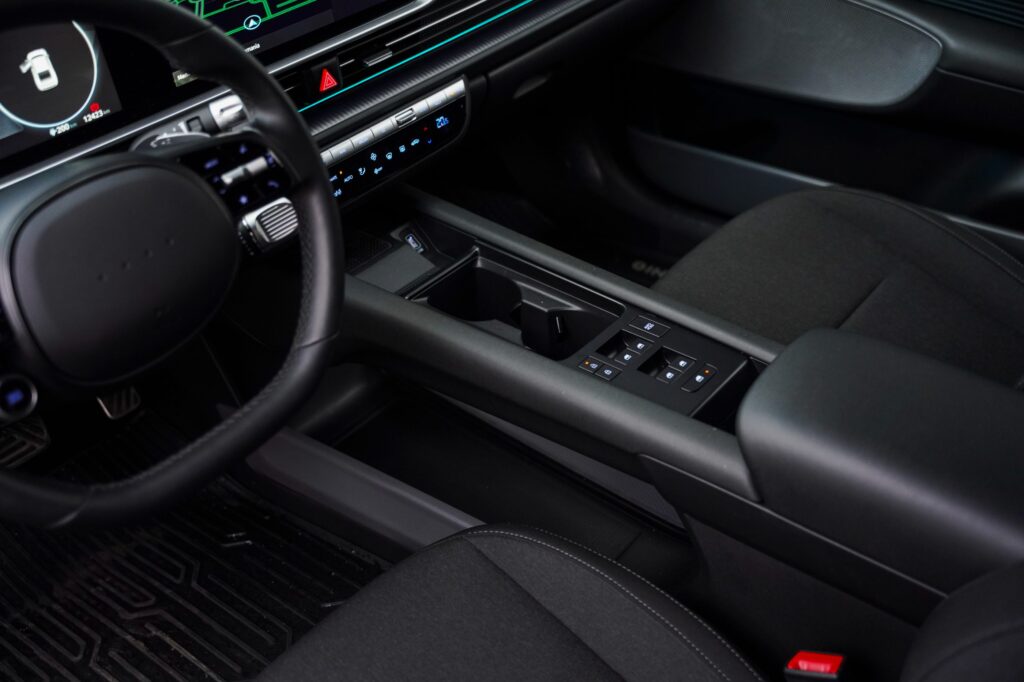
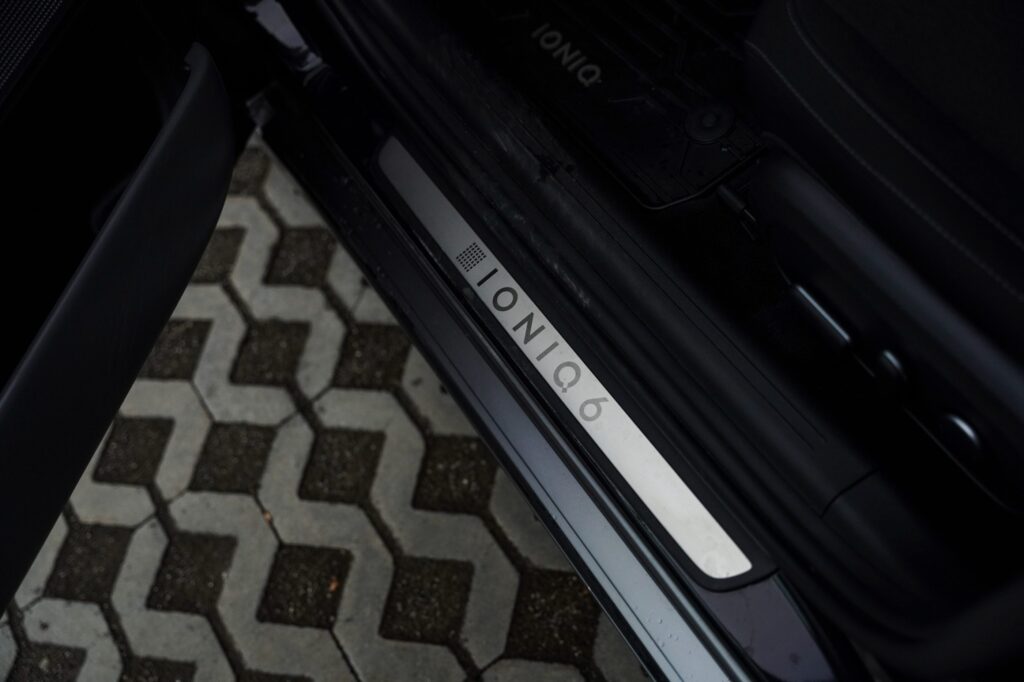
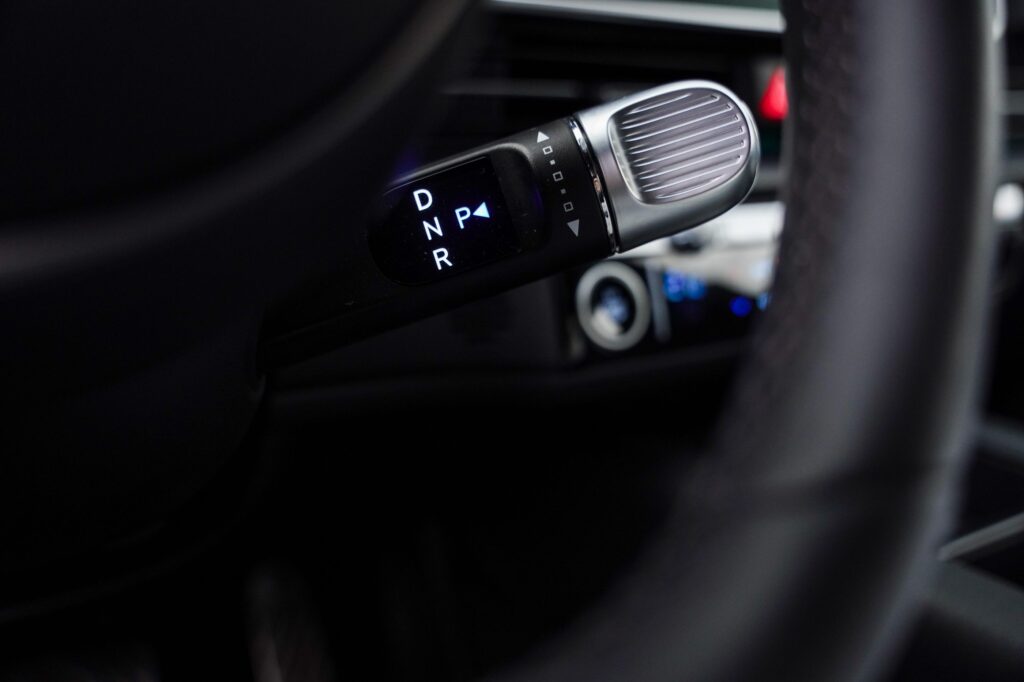
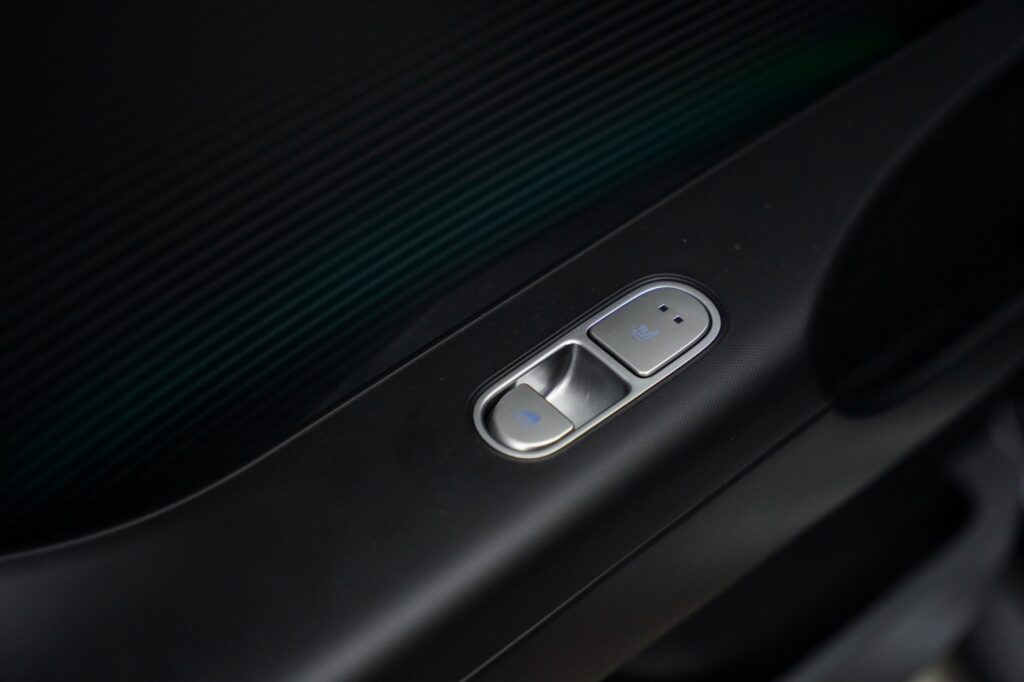
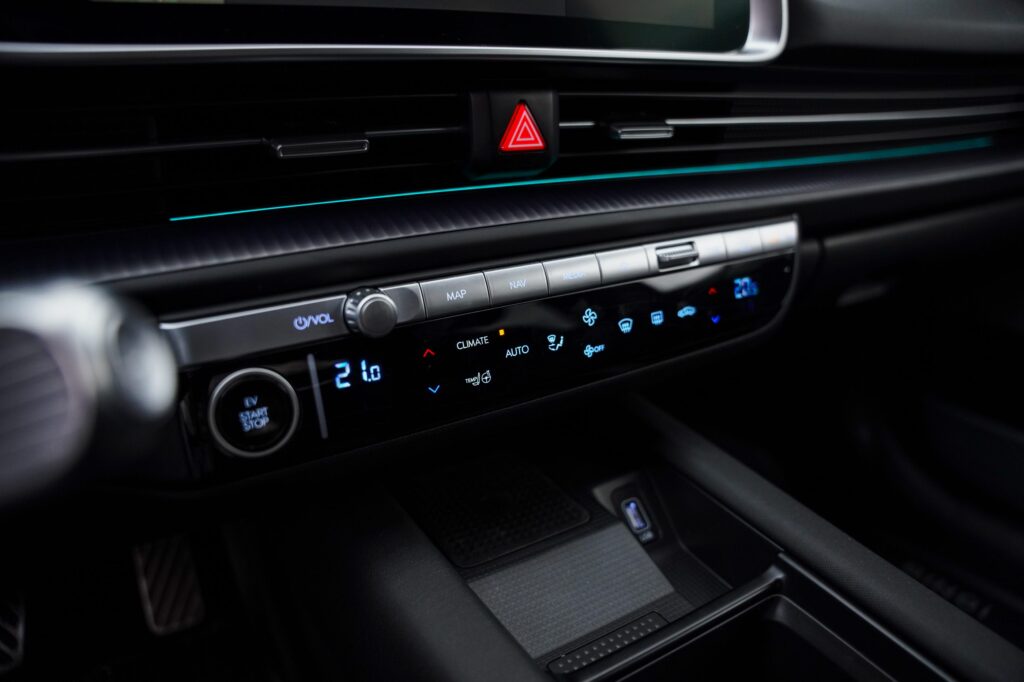
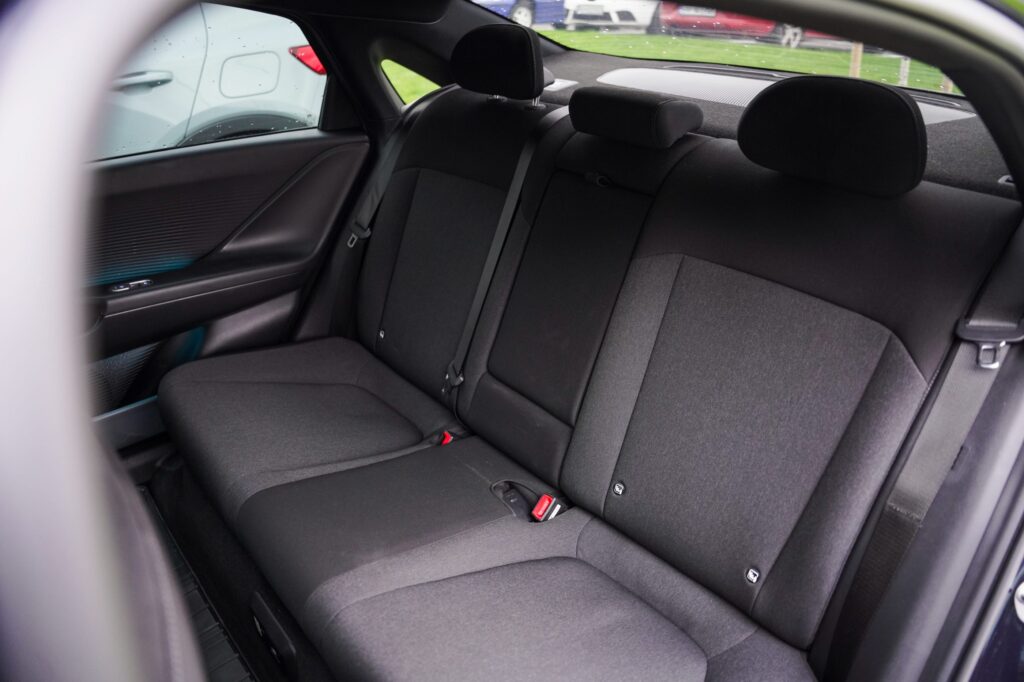
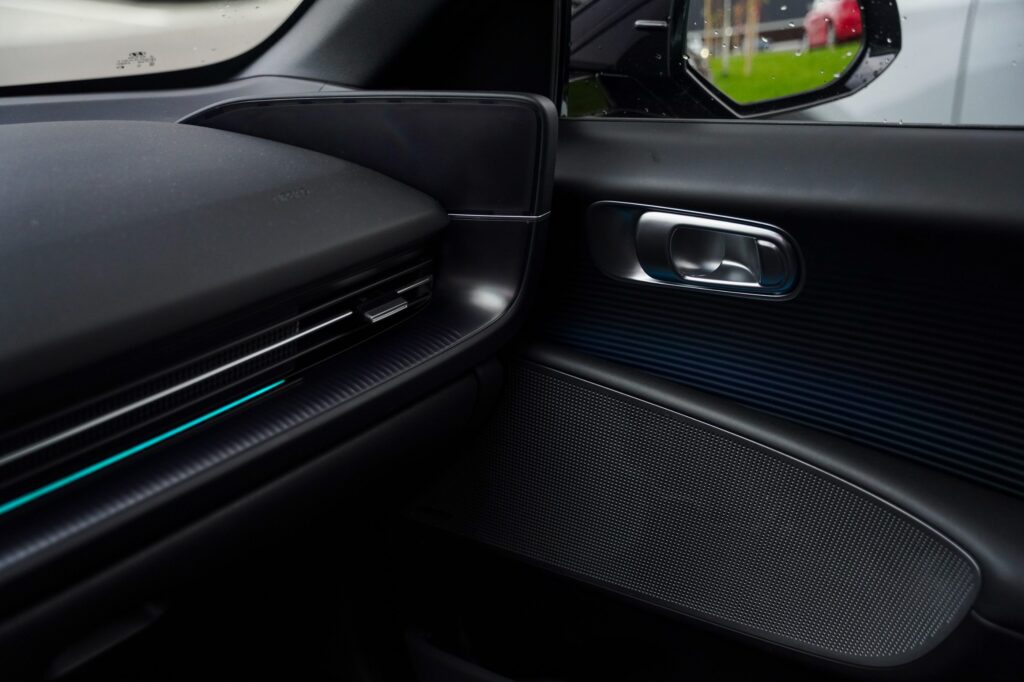
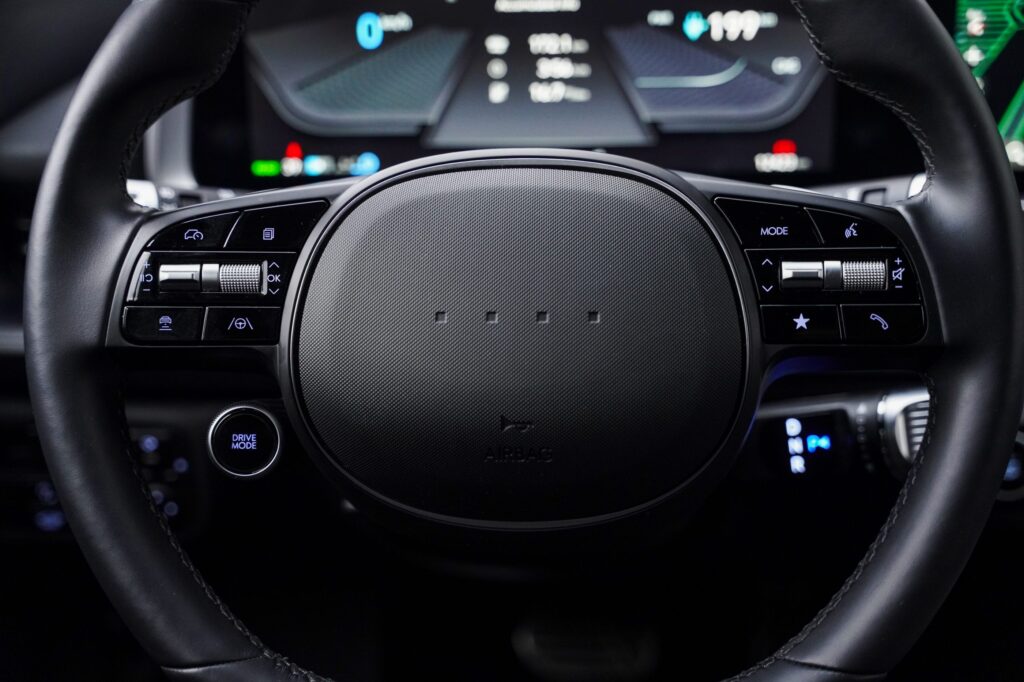

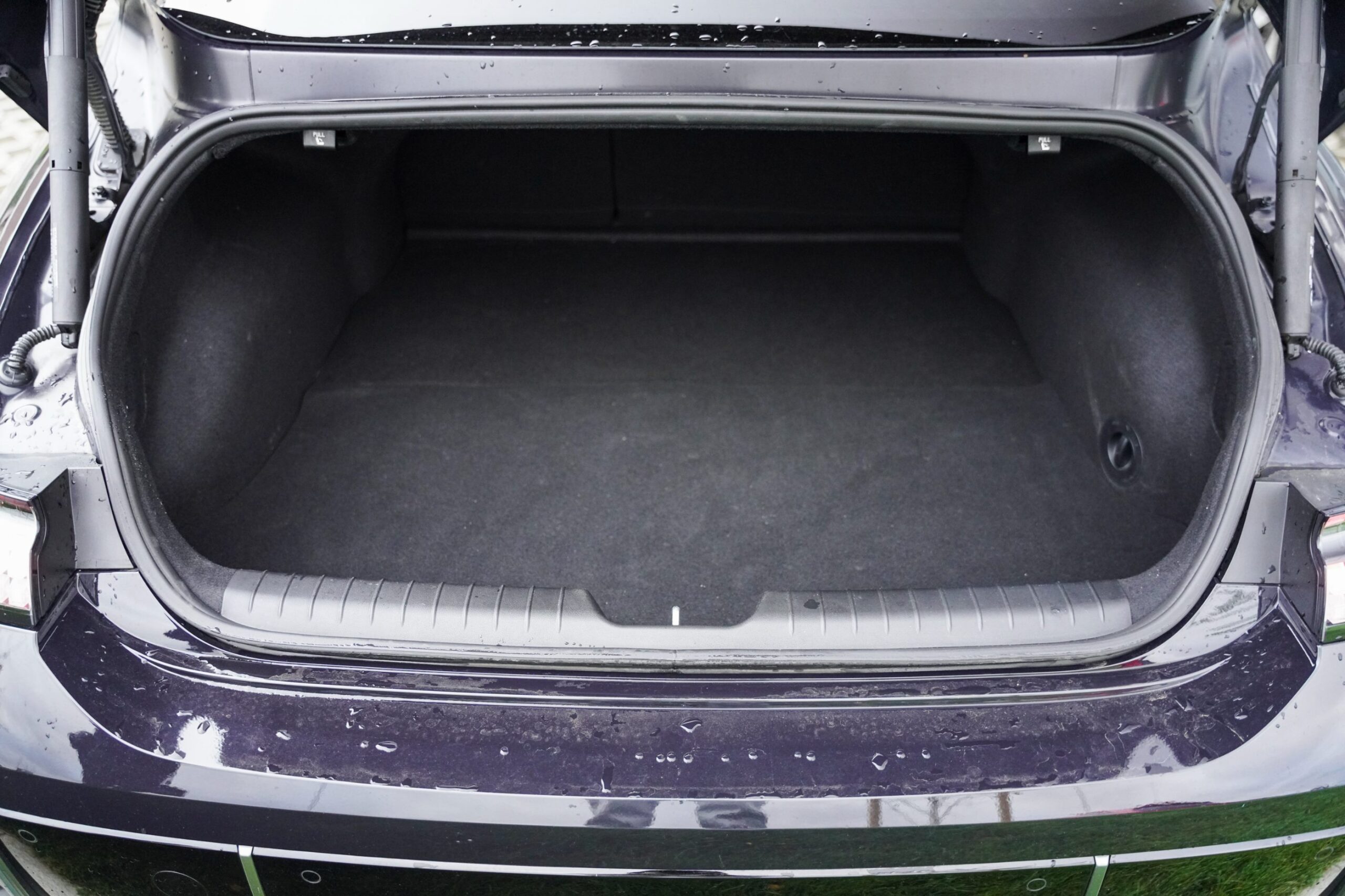

is a project backed by SCHAEFFLER
Charged by
OMV eMotion and Renovatio e-charge
Green Partner
Autonom
Charging stations
MOON România
On the road with
Michelin
Powered by
Server Config

